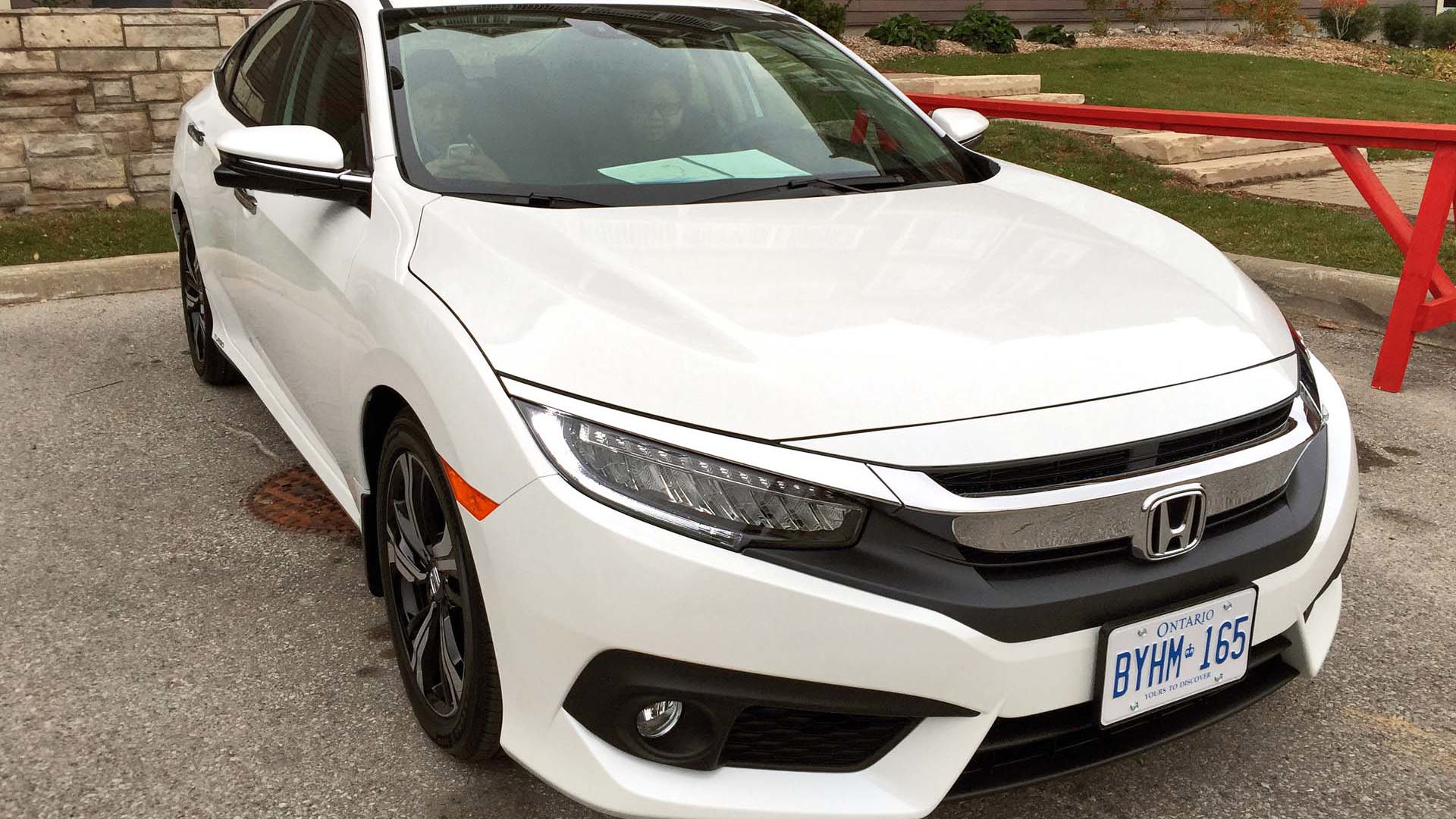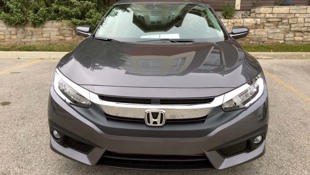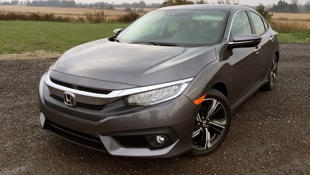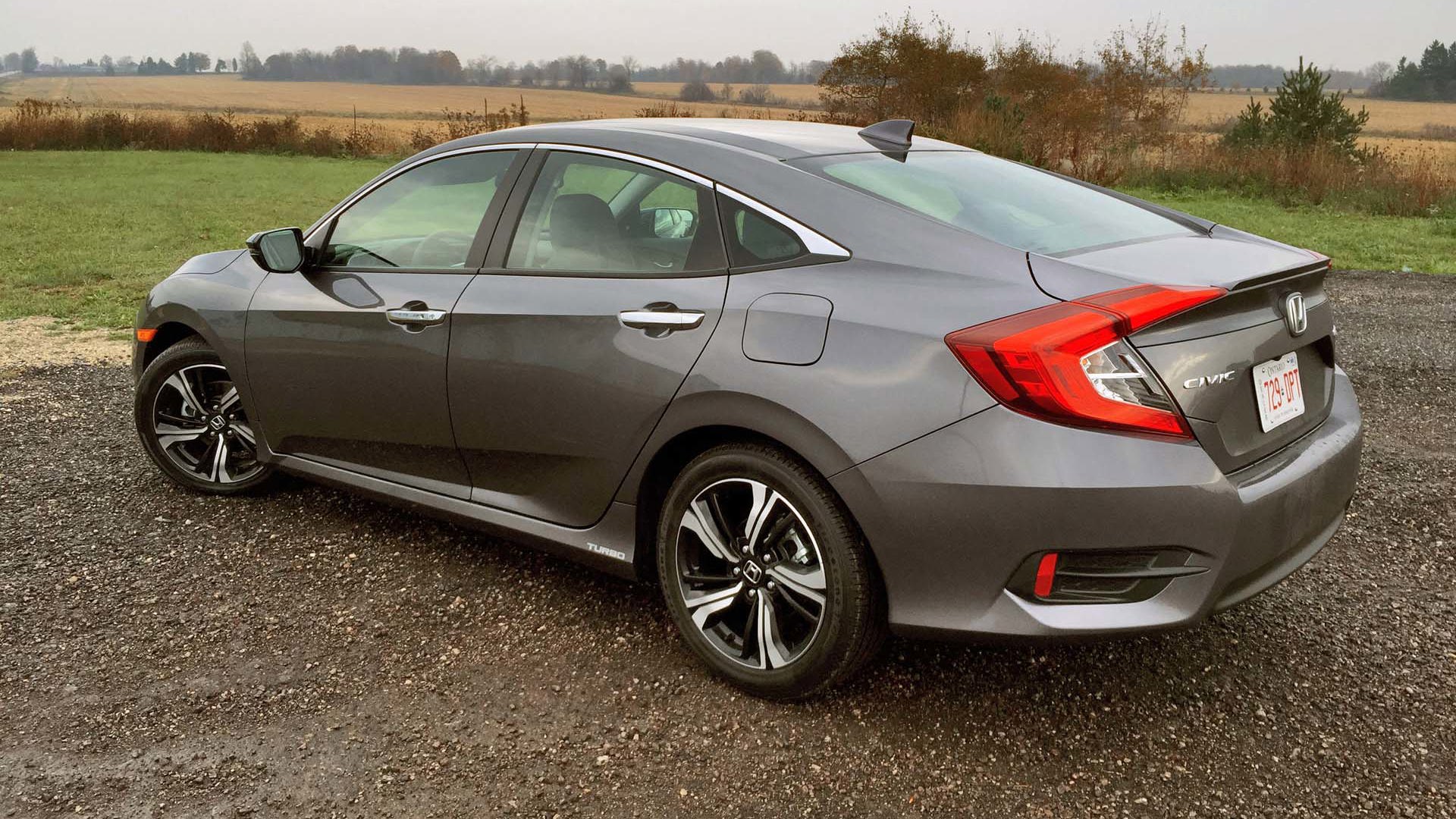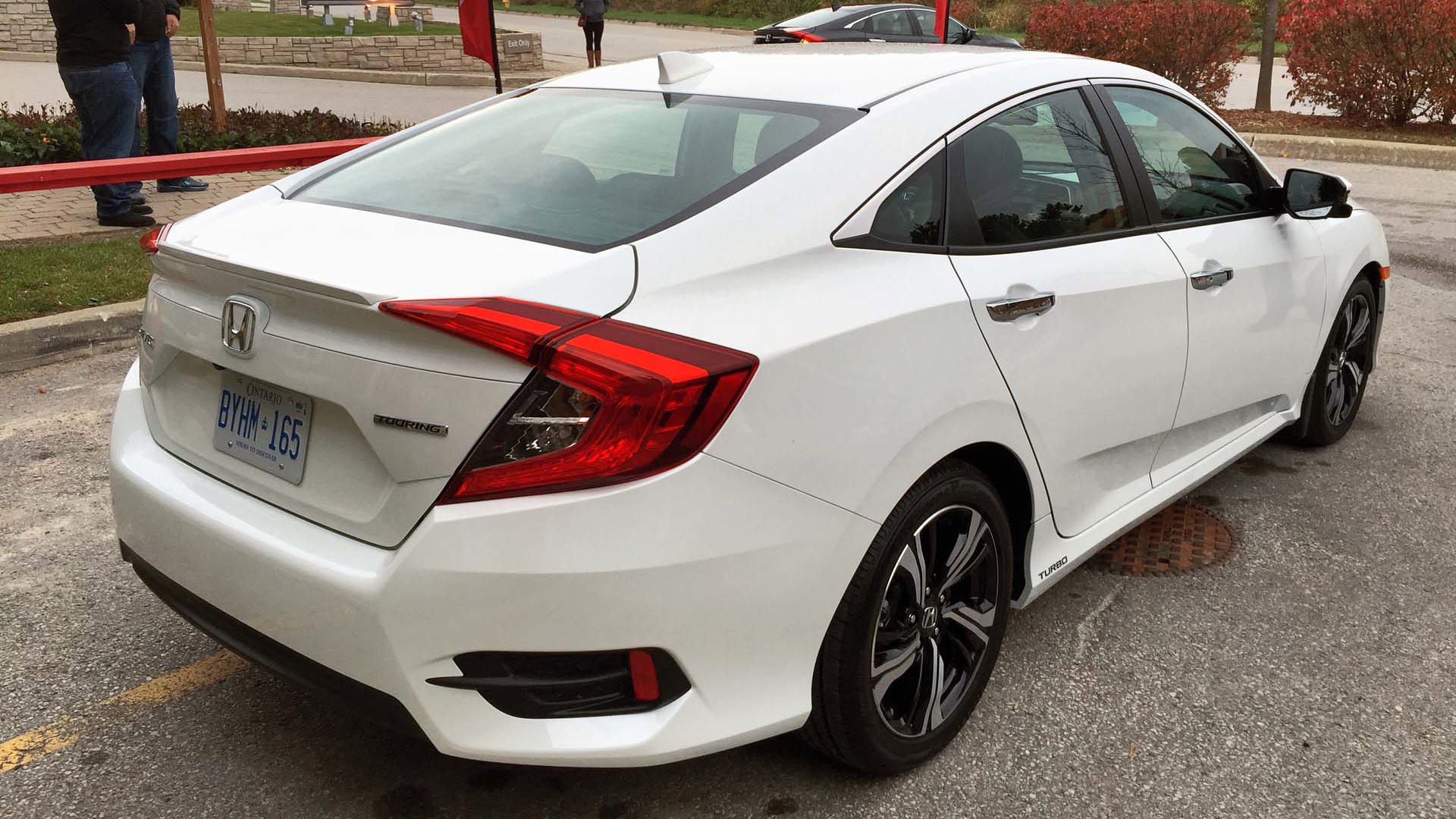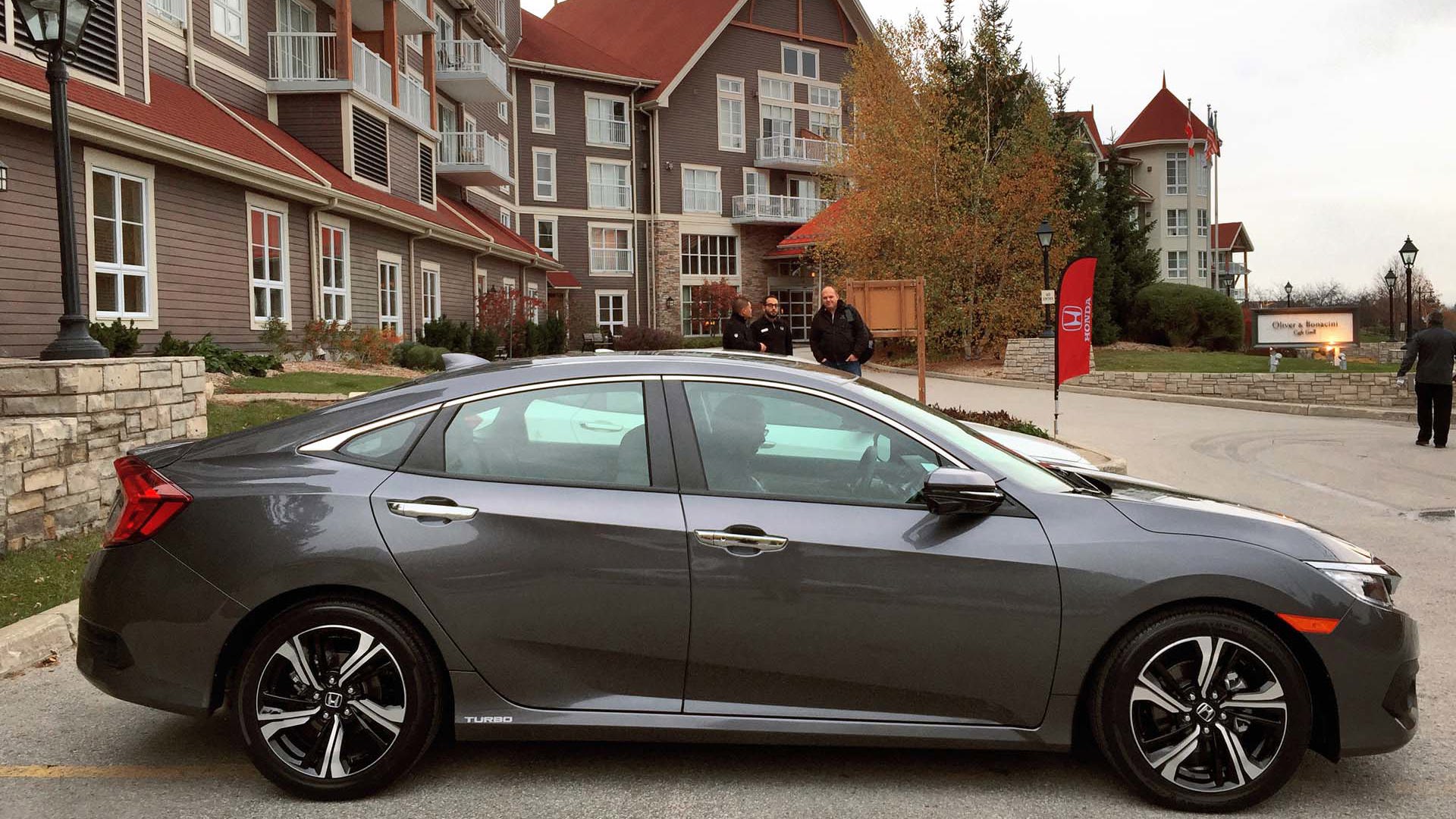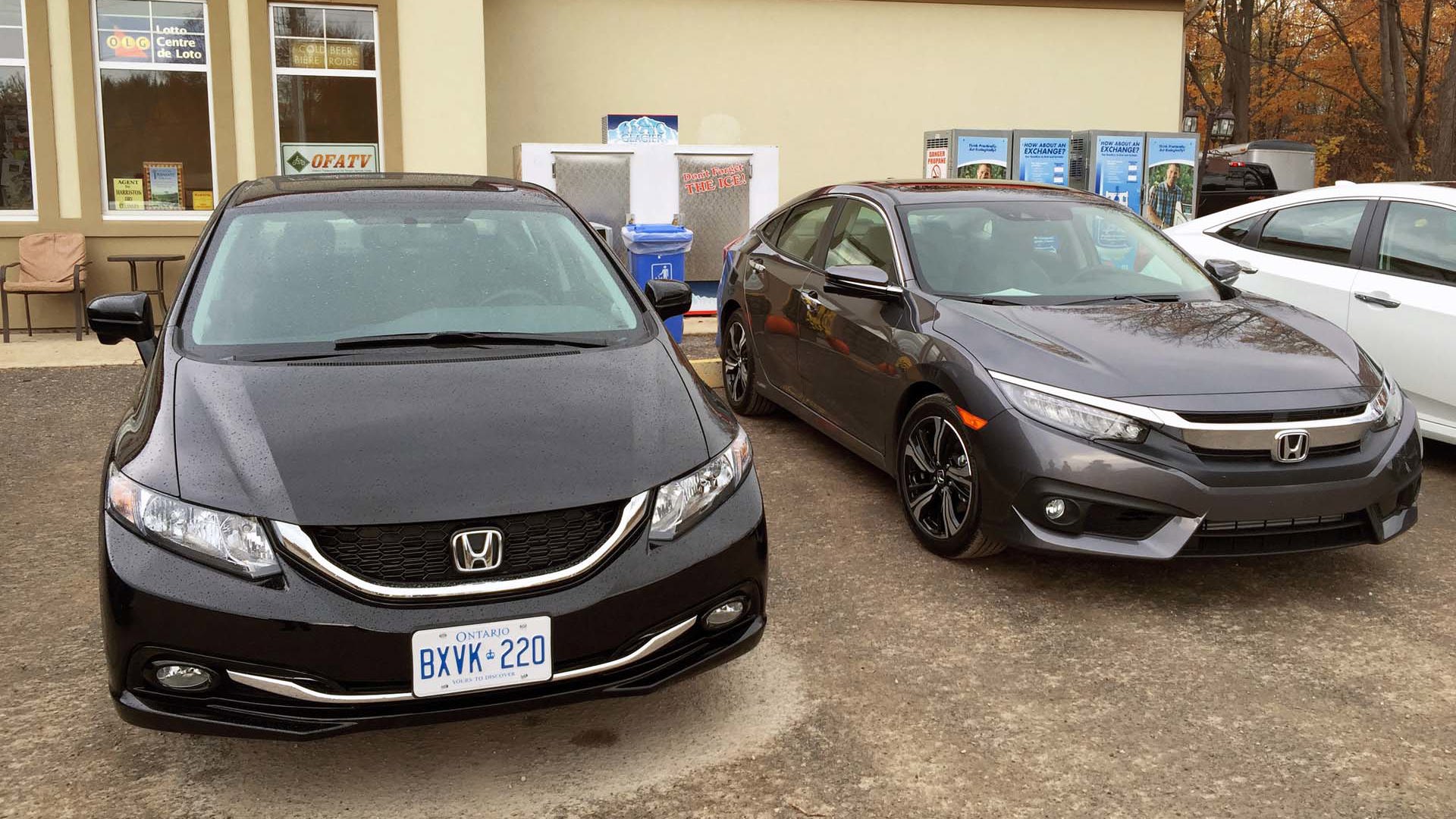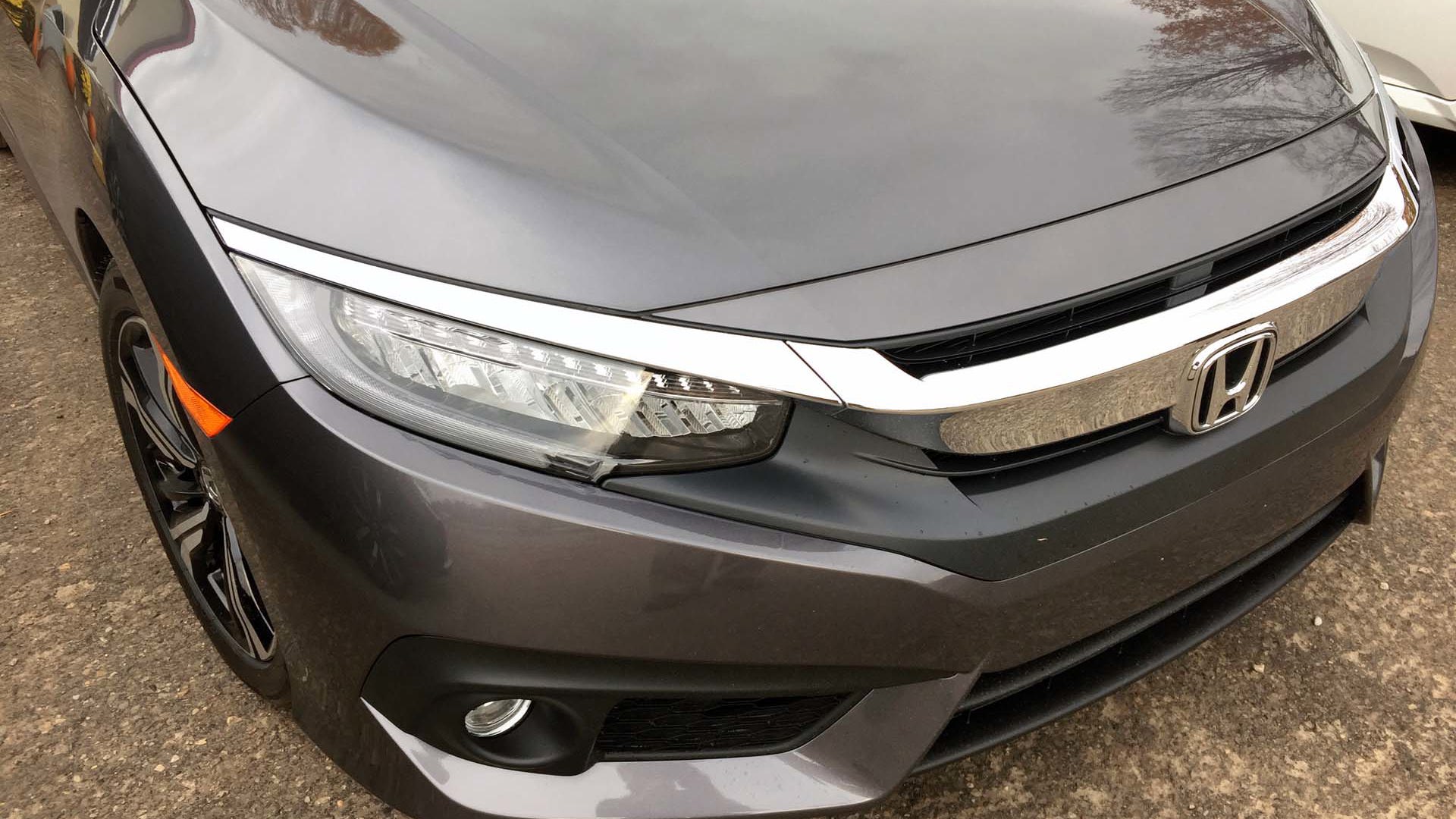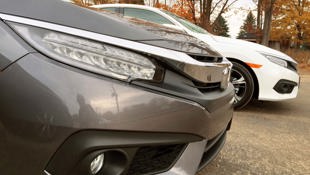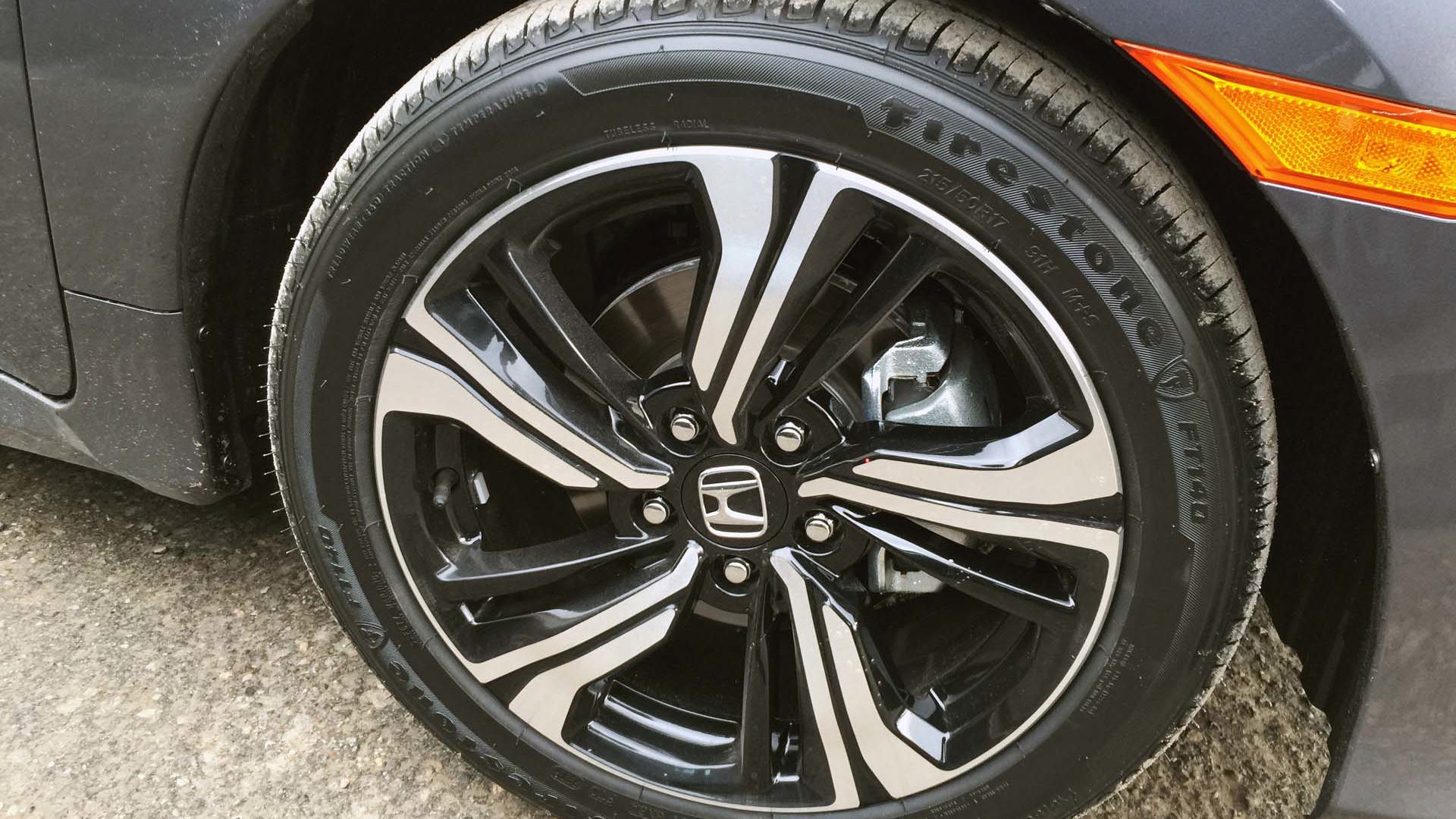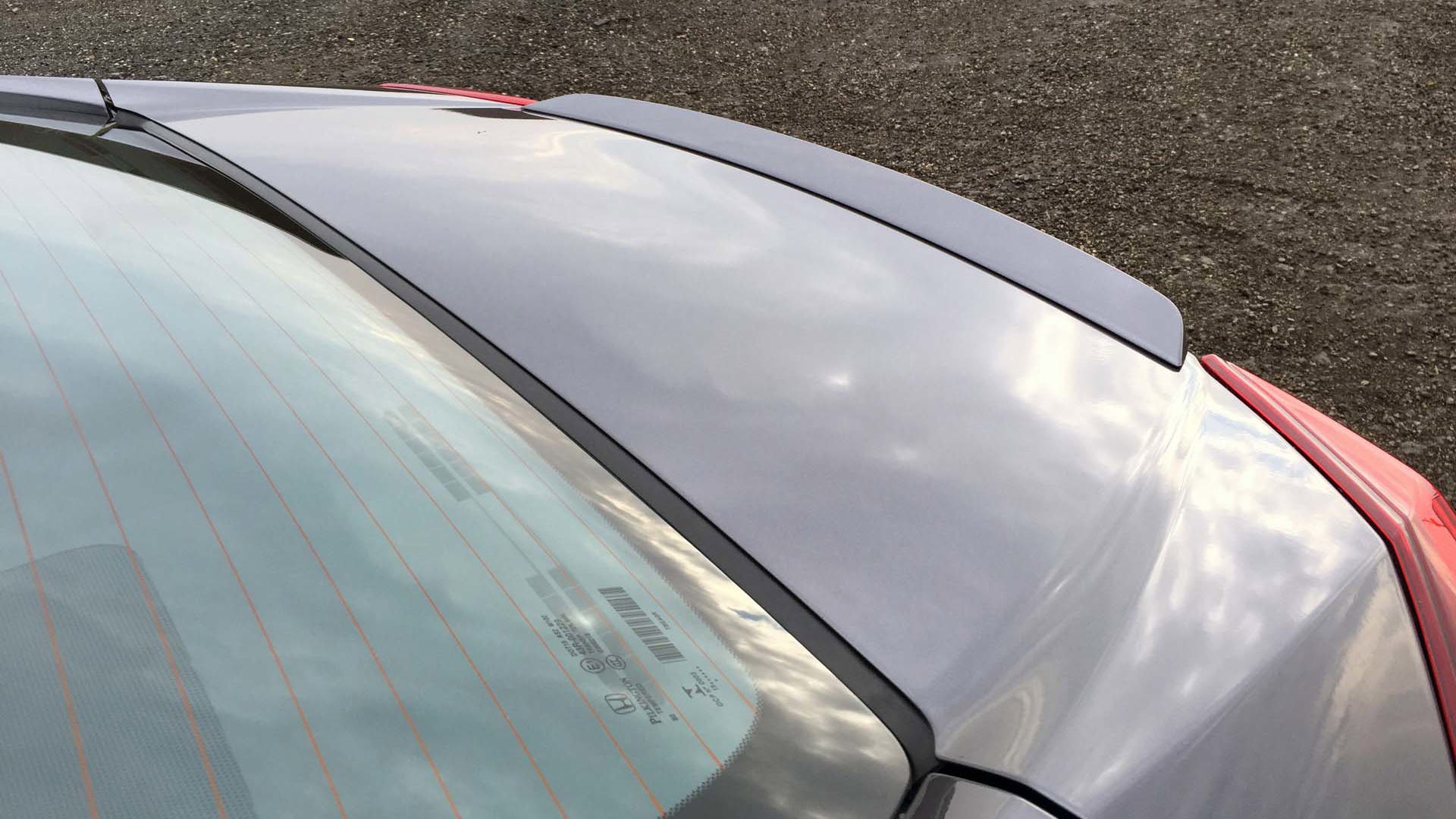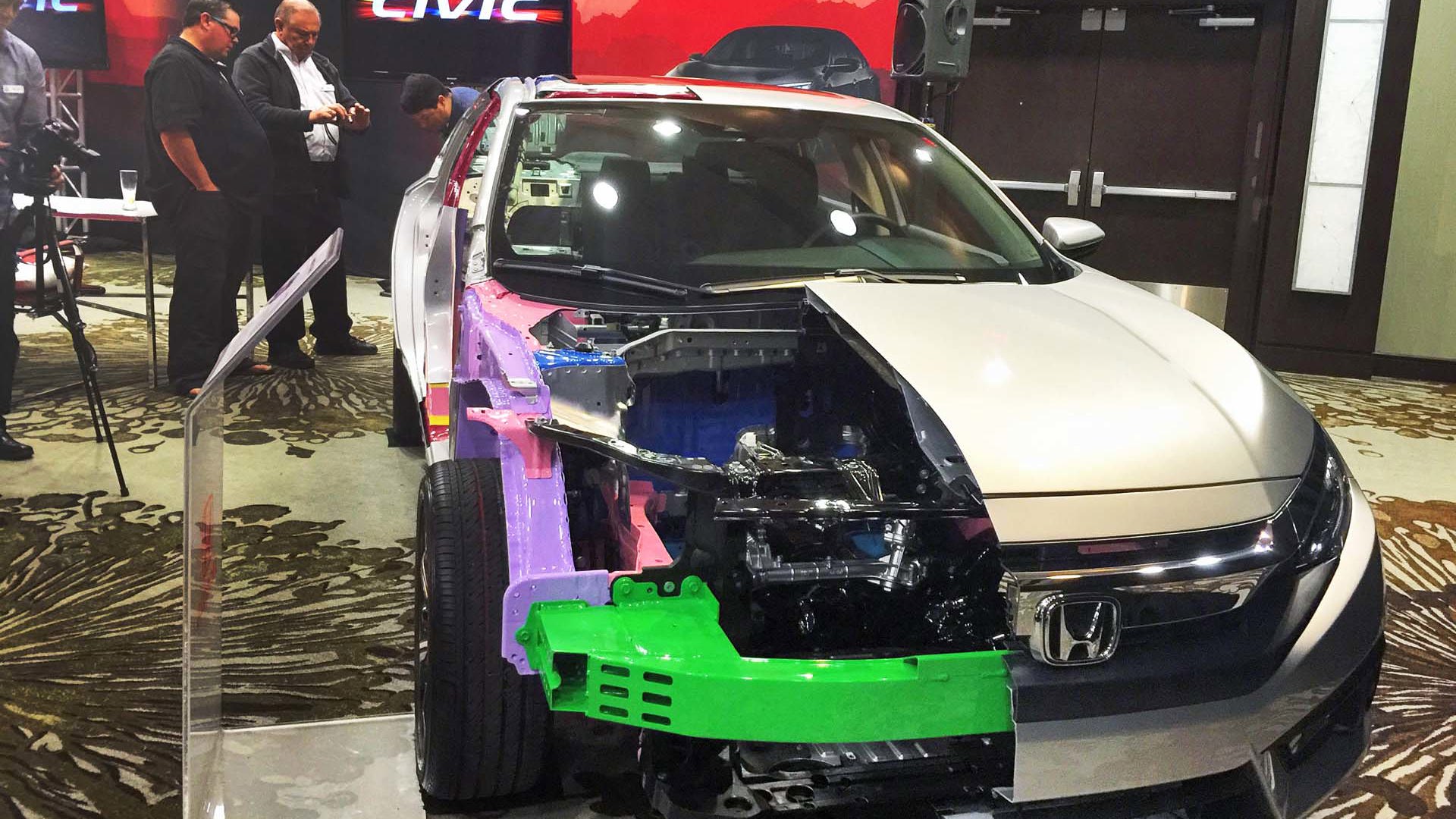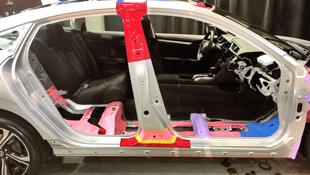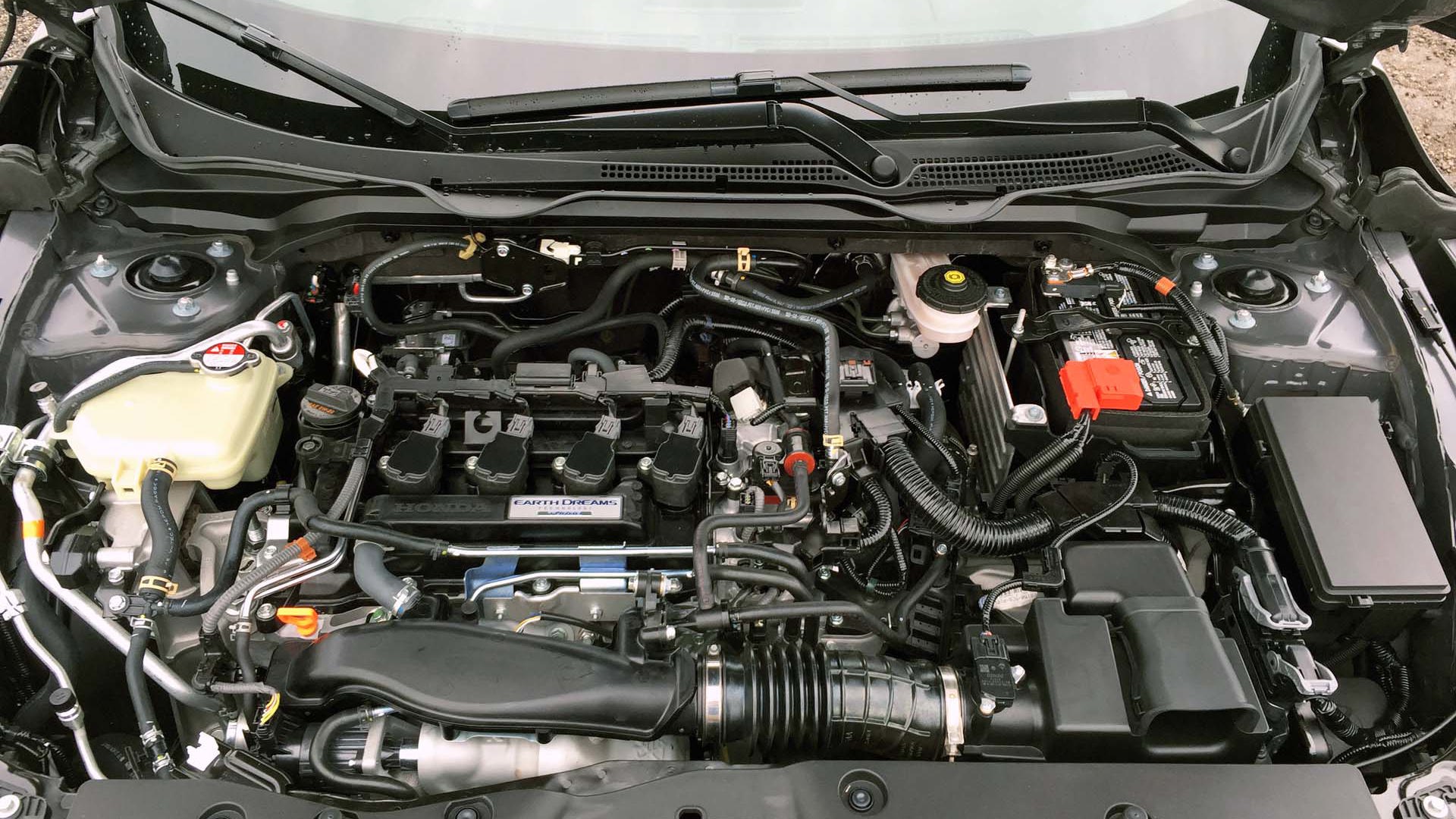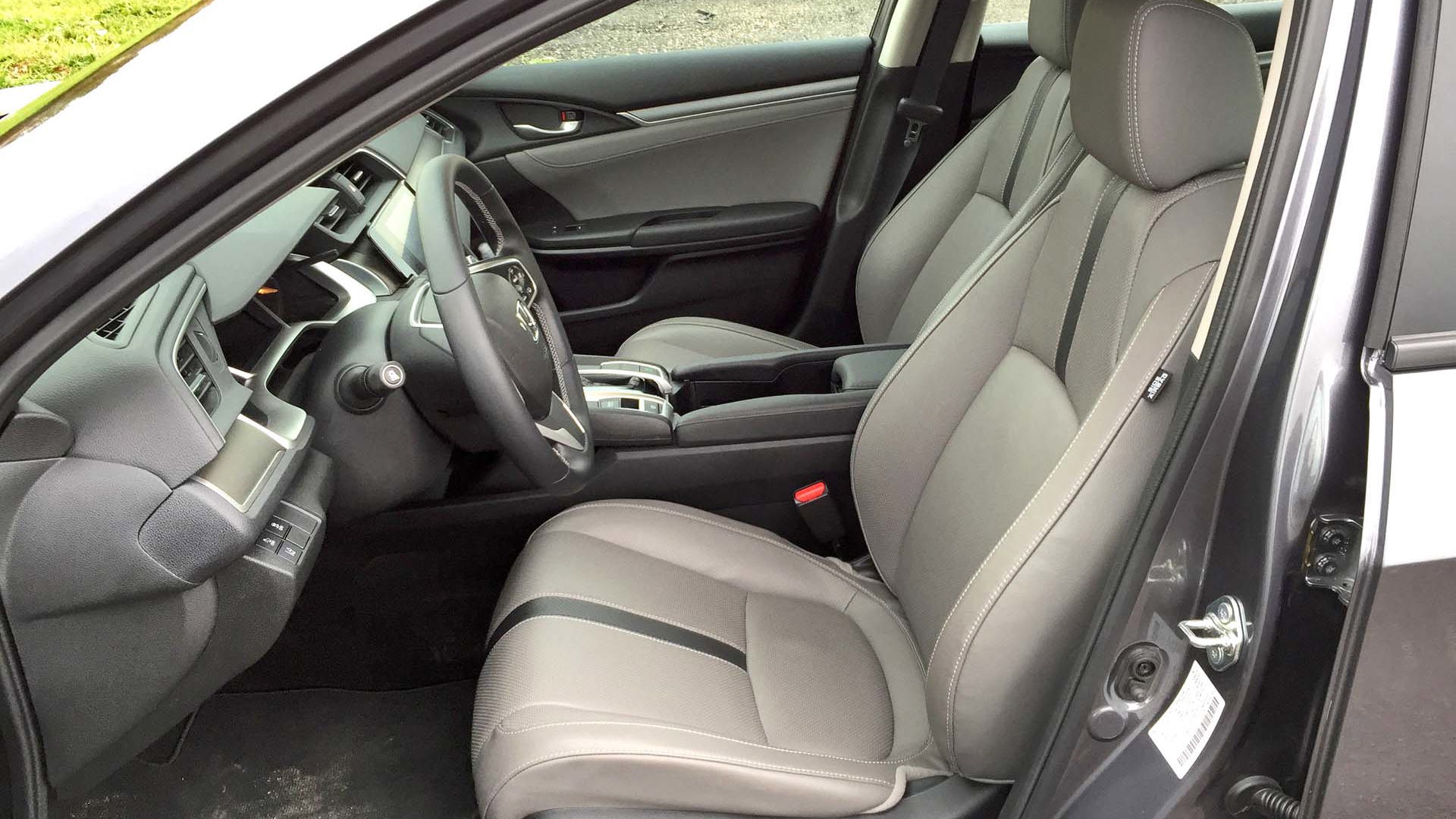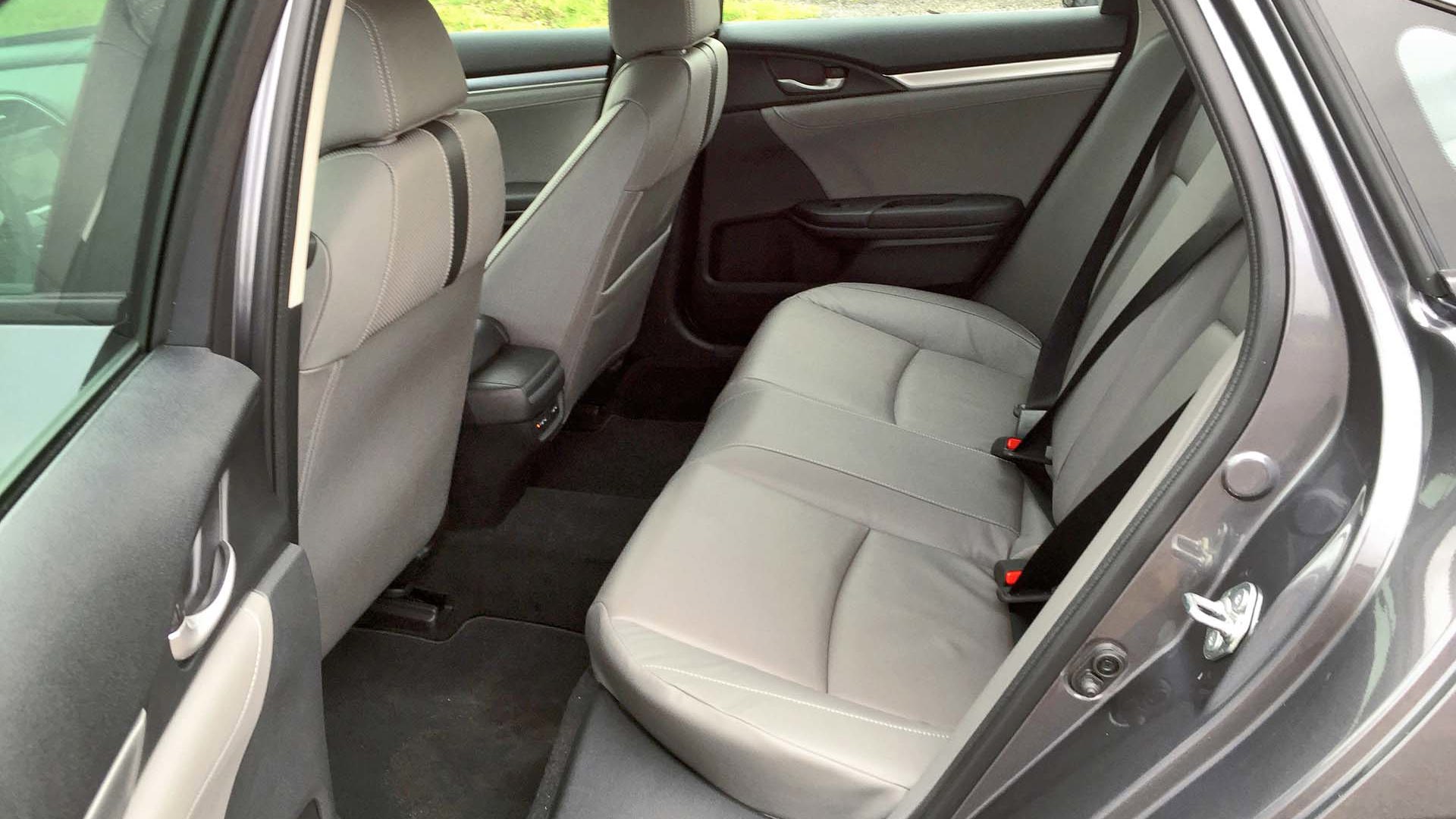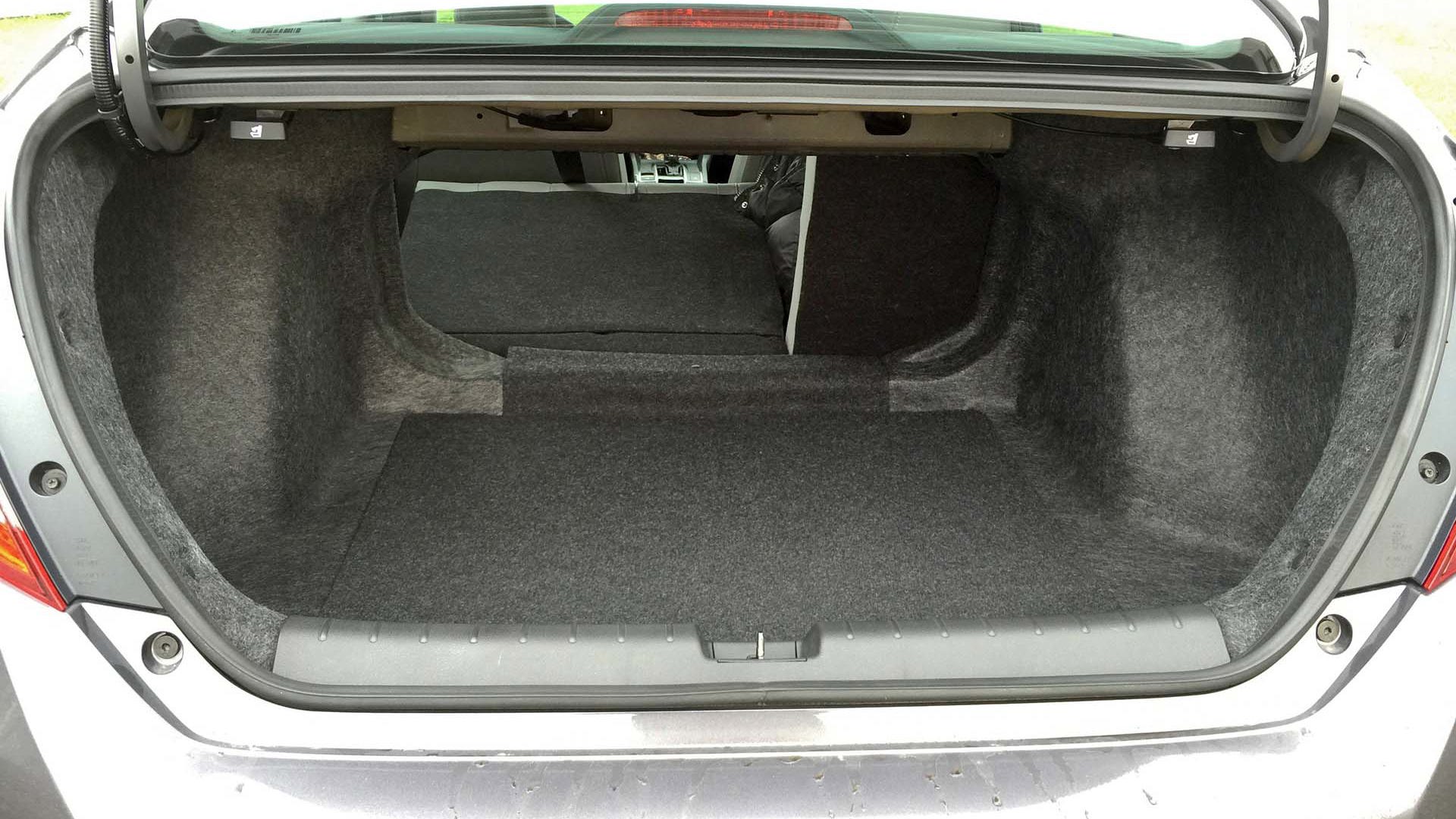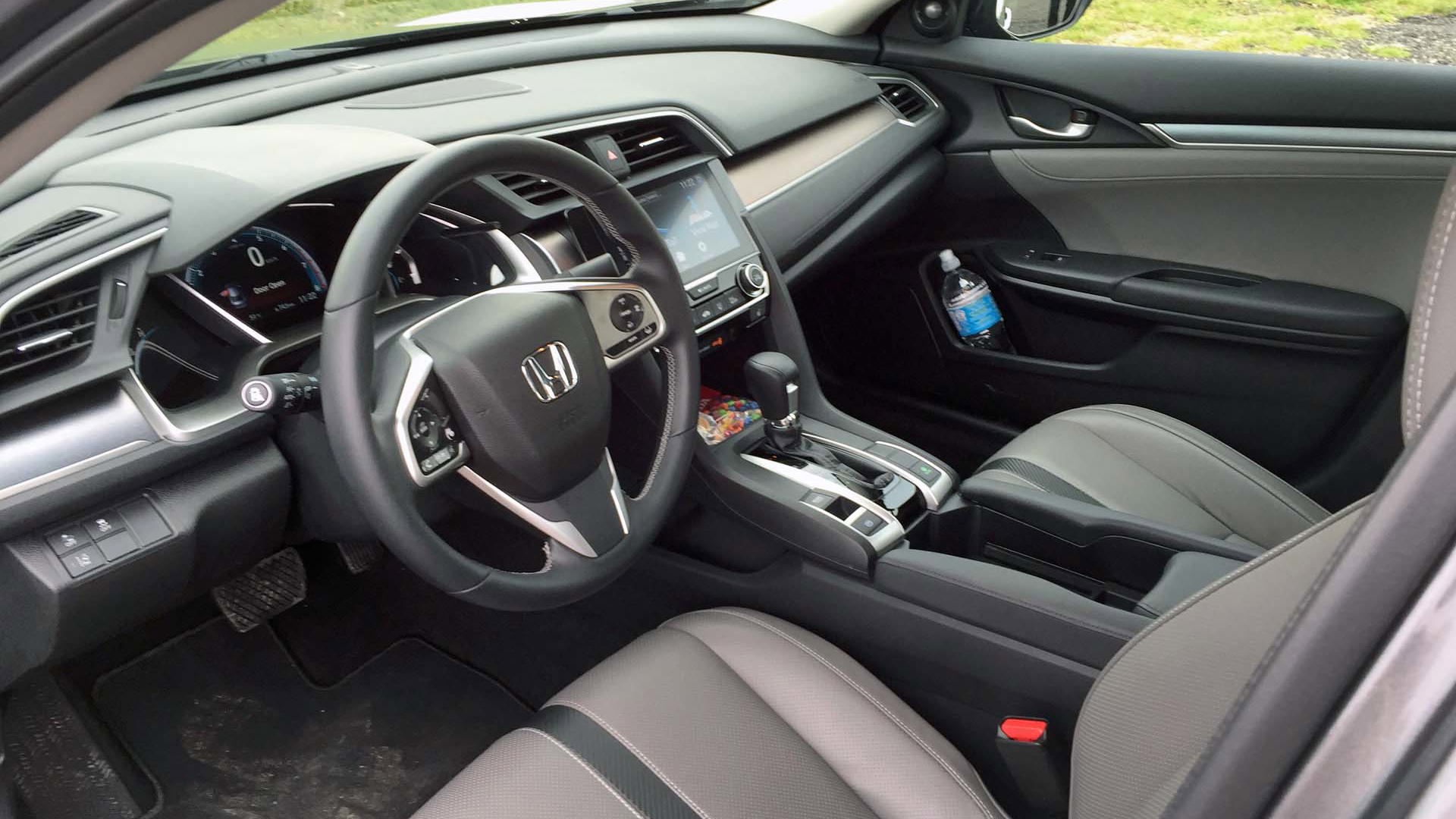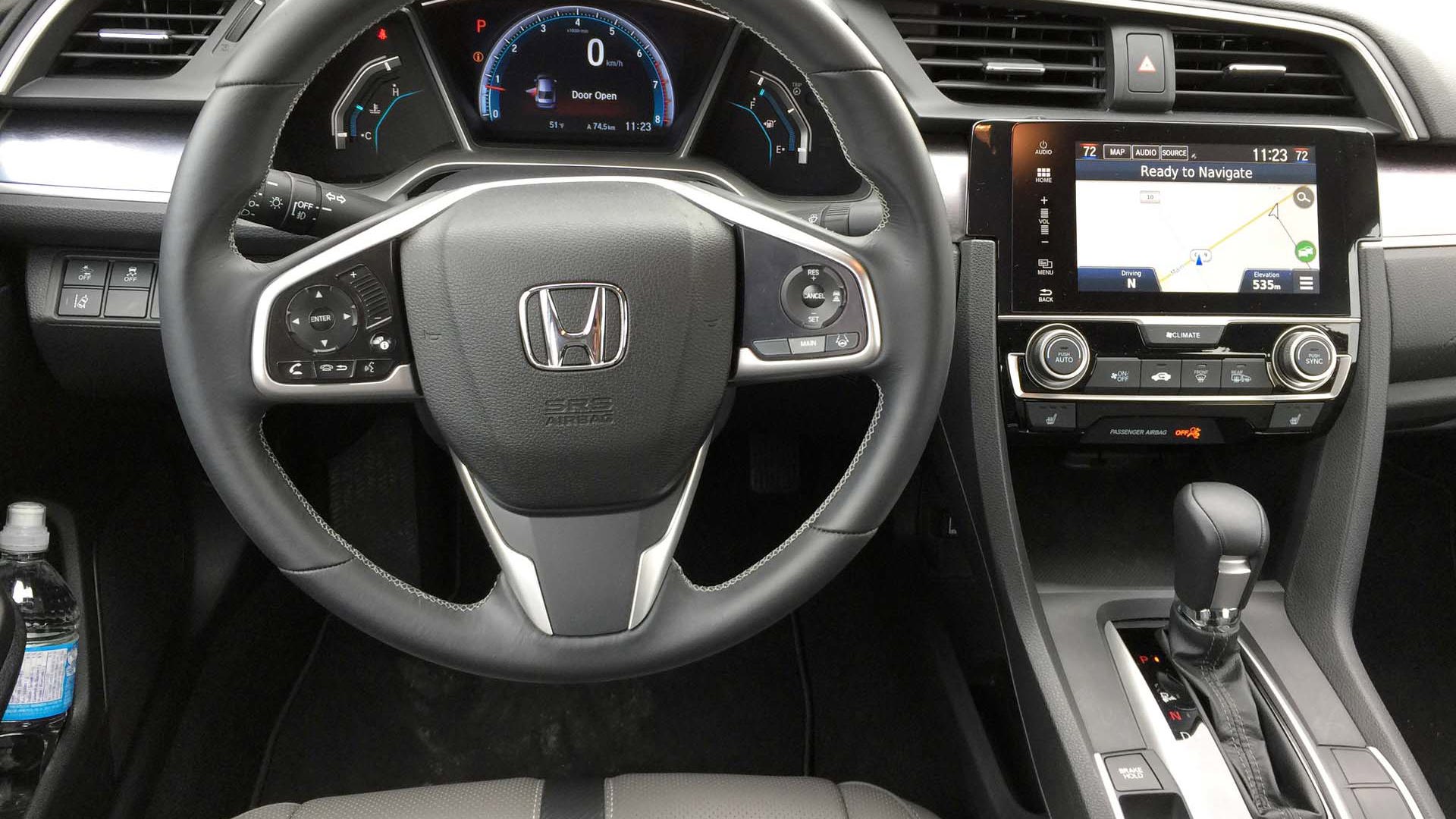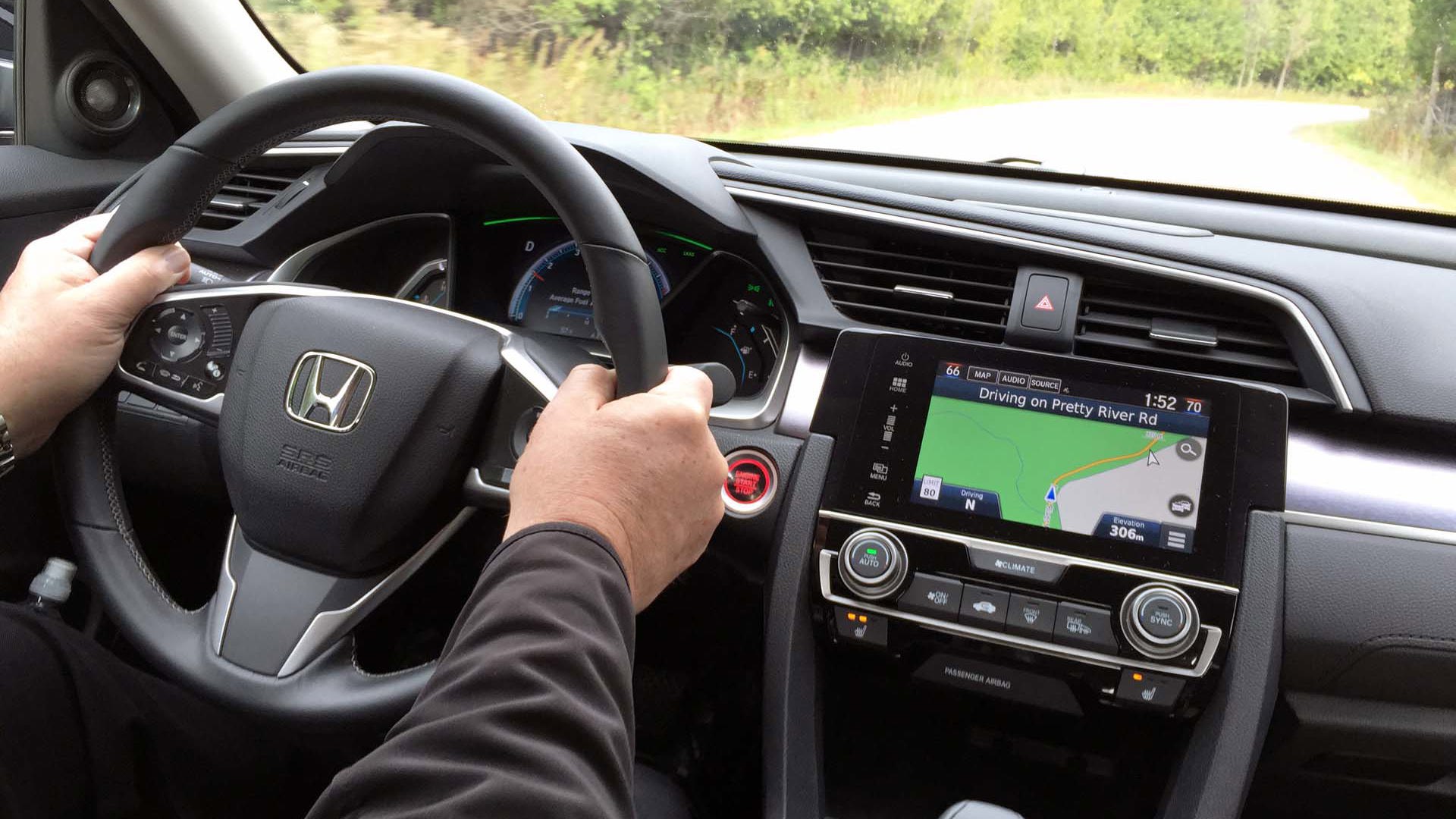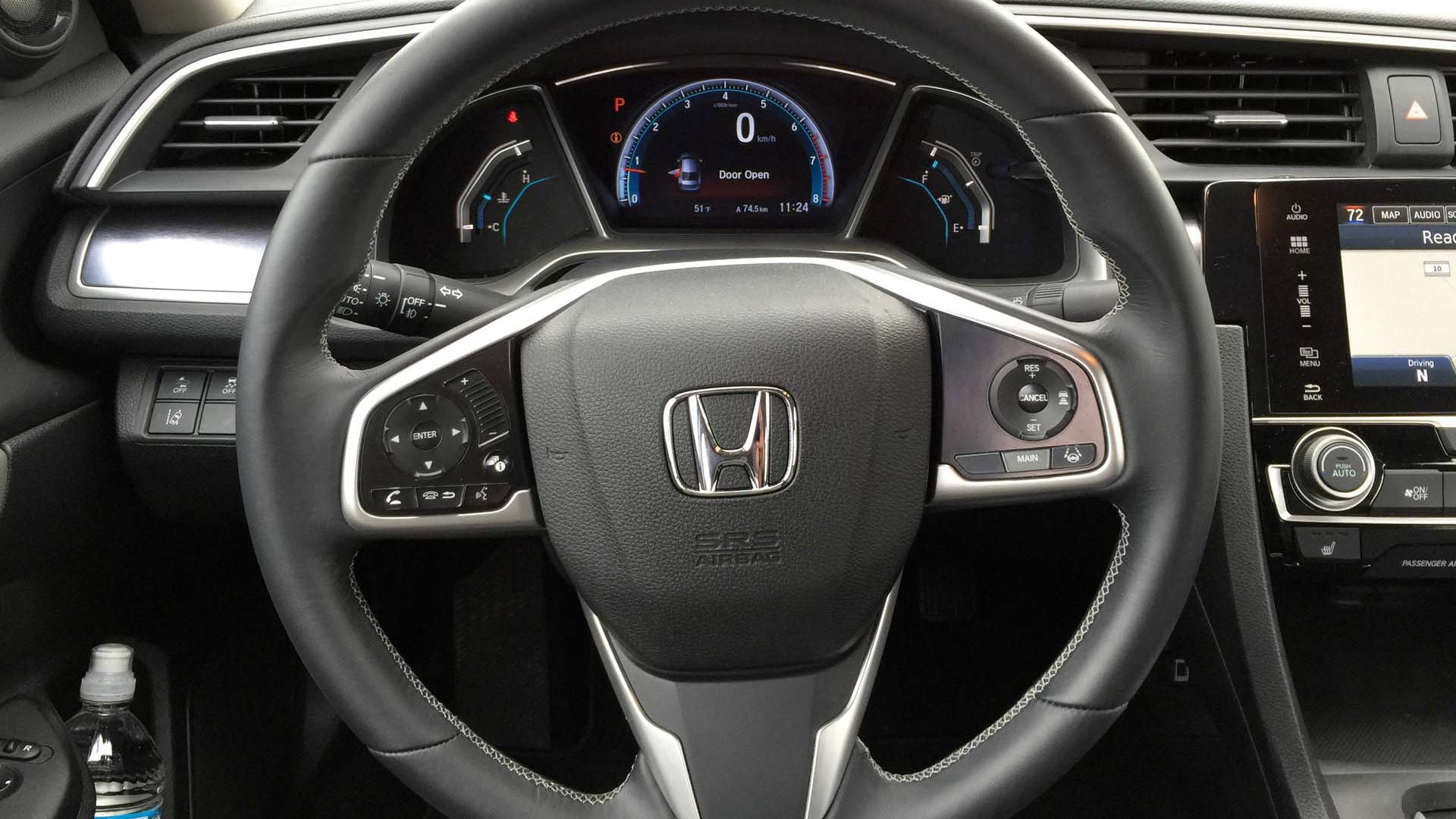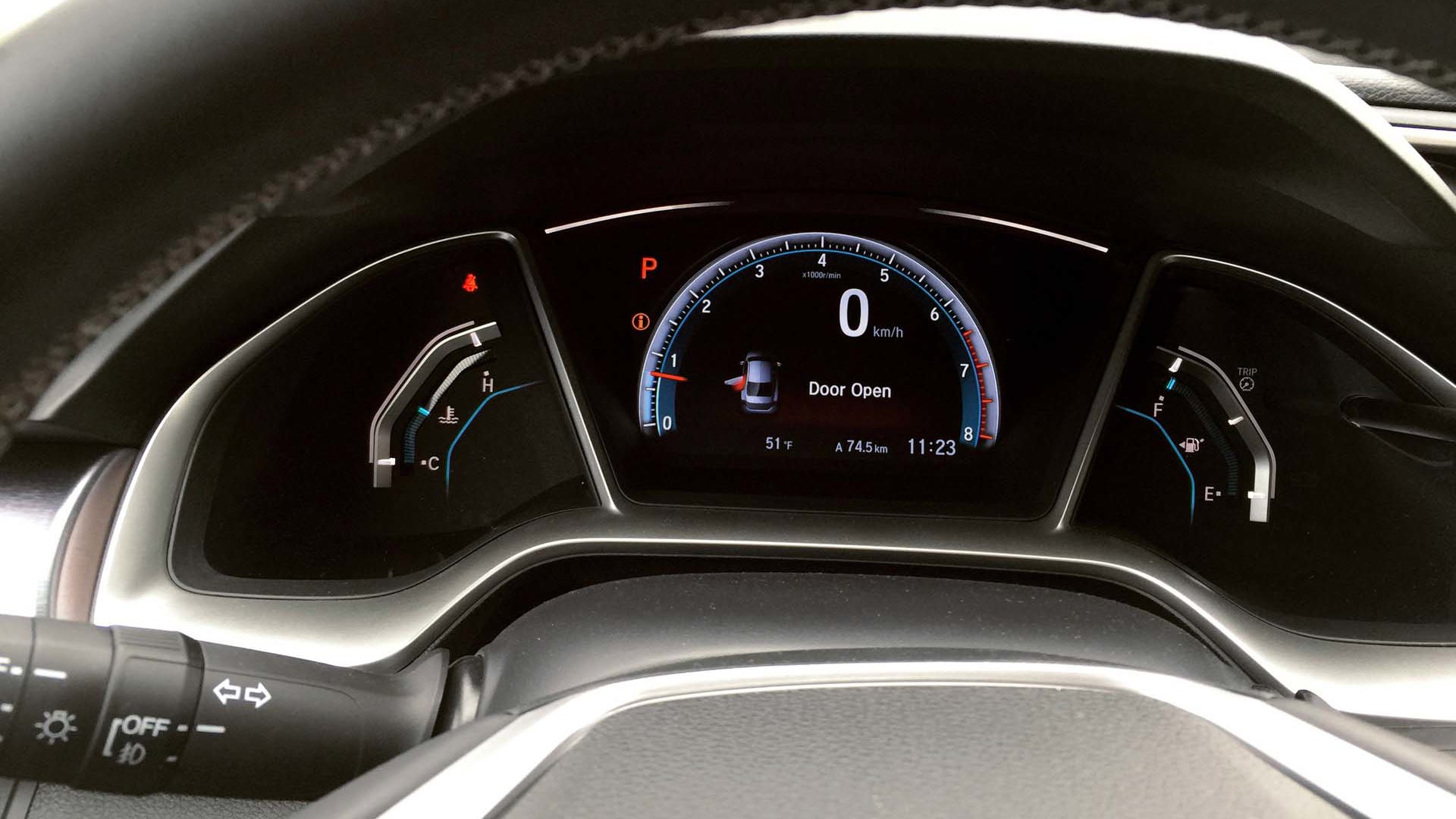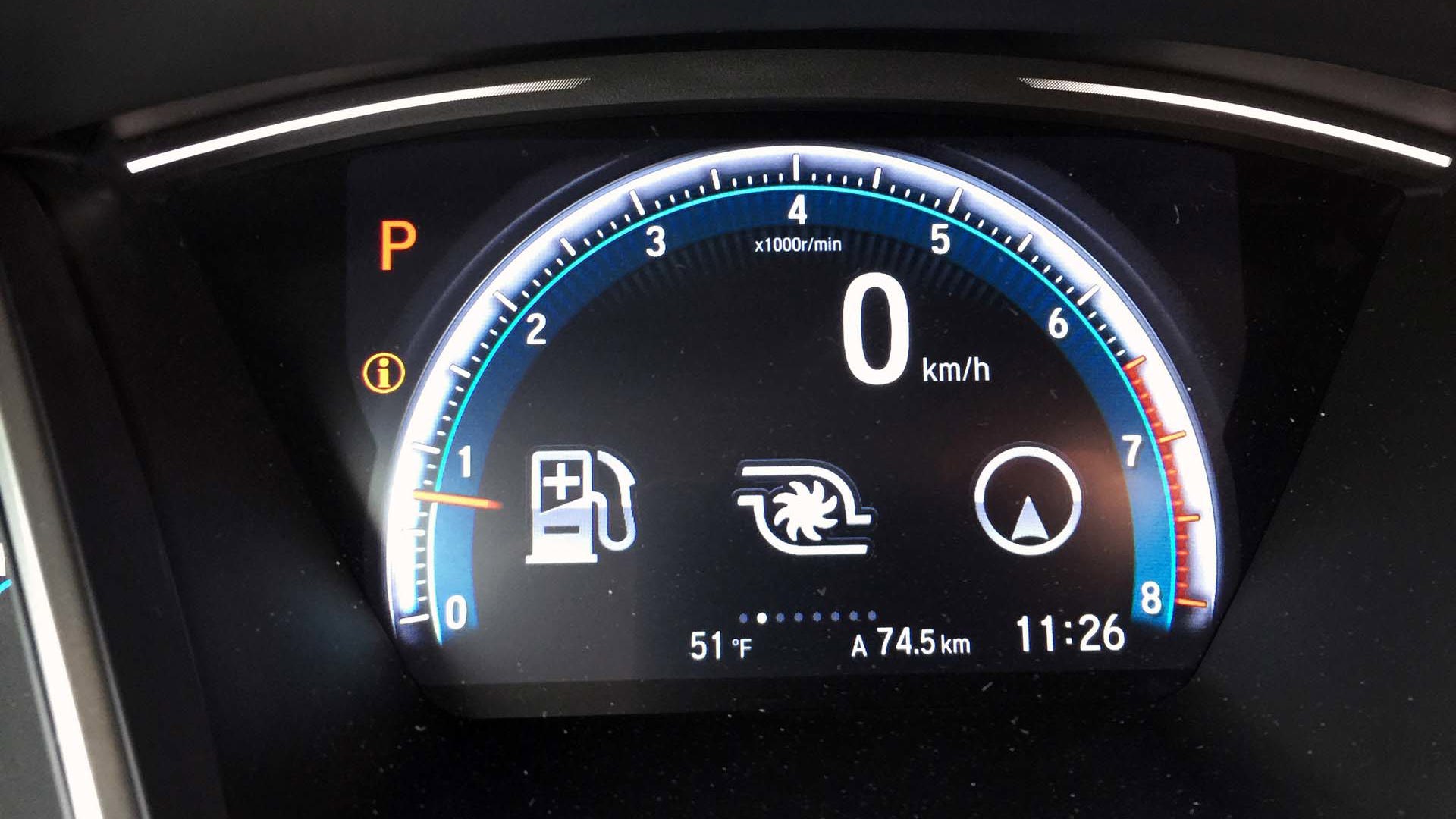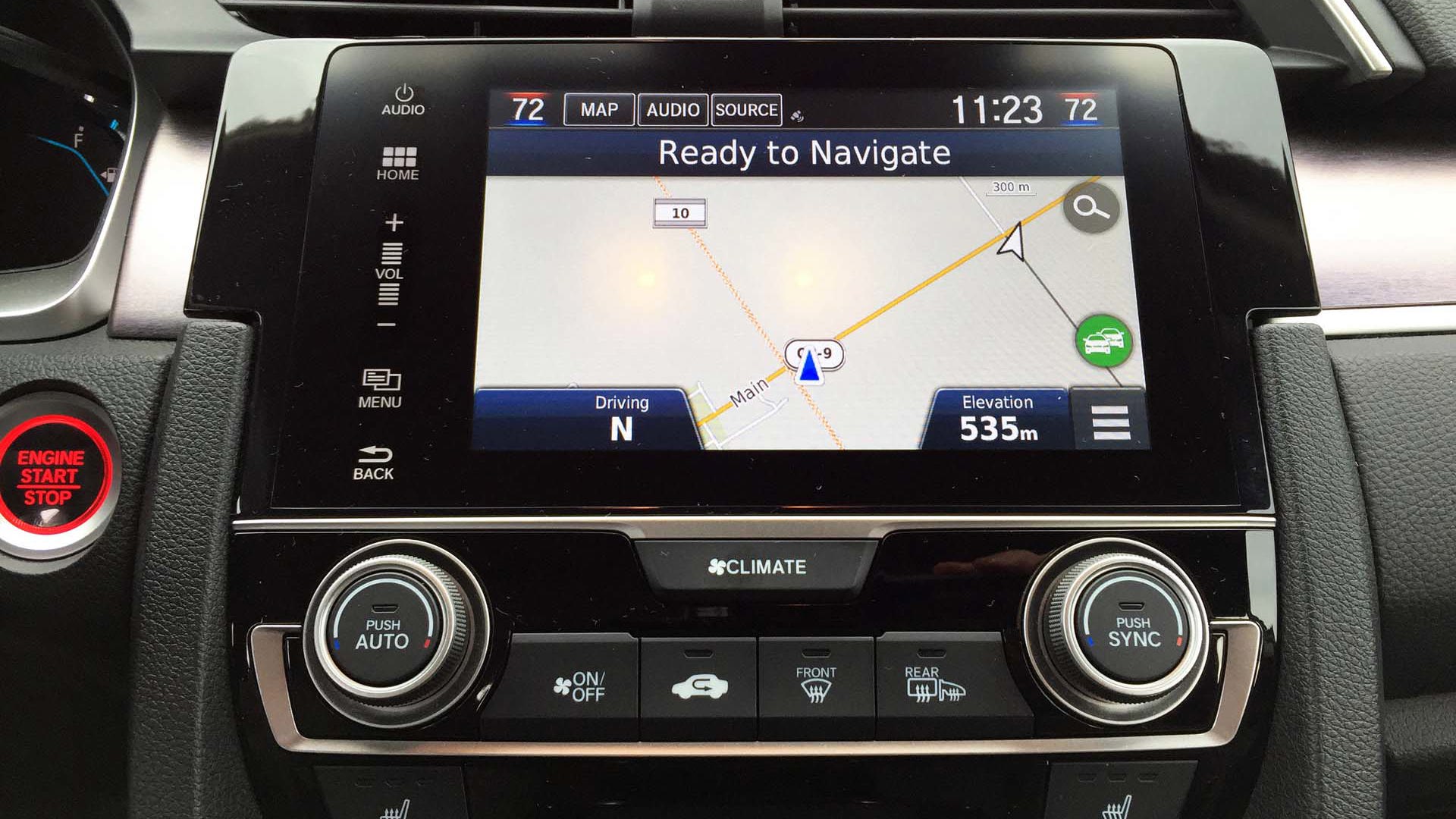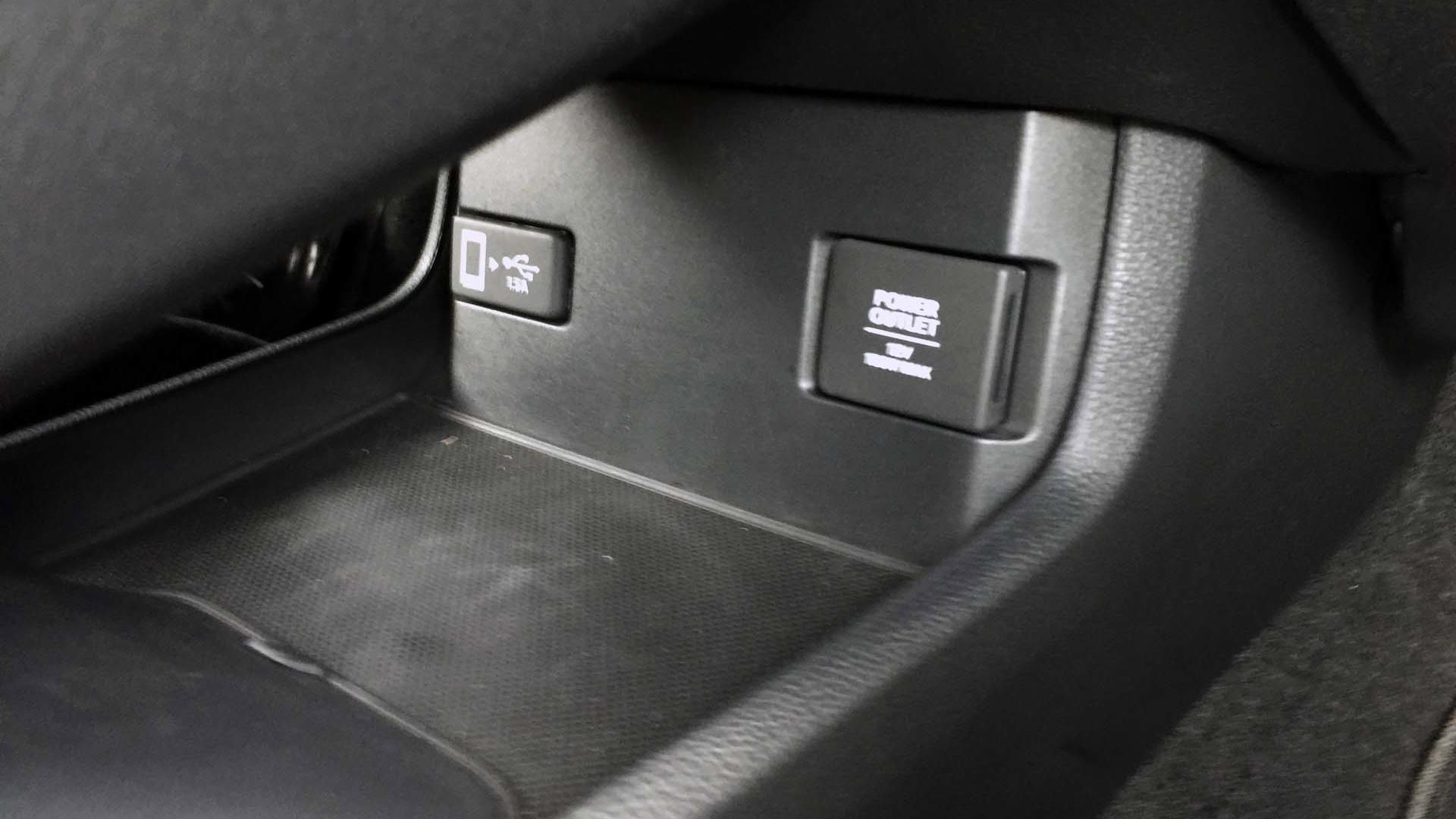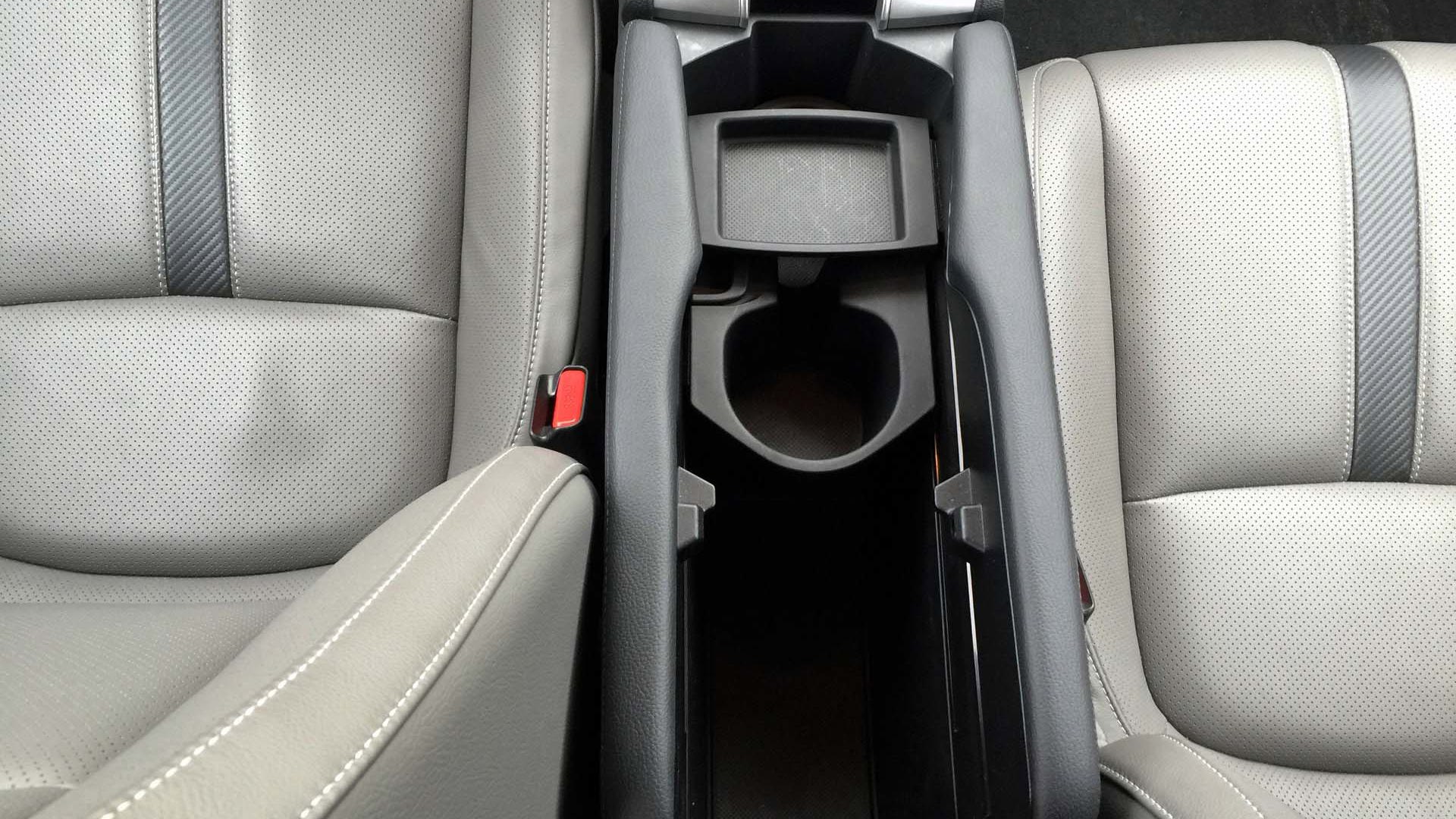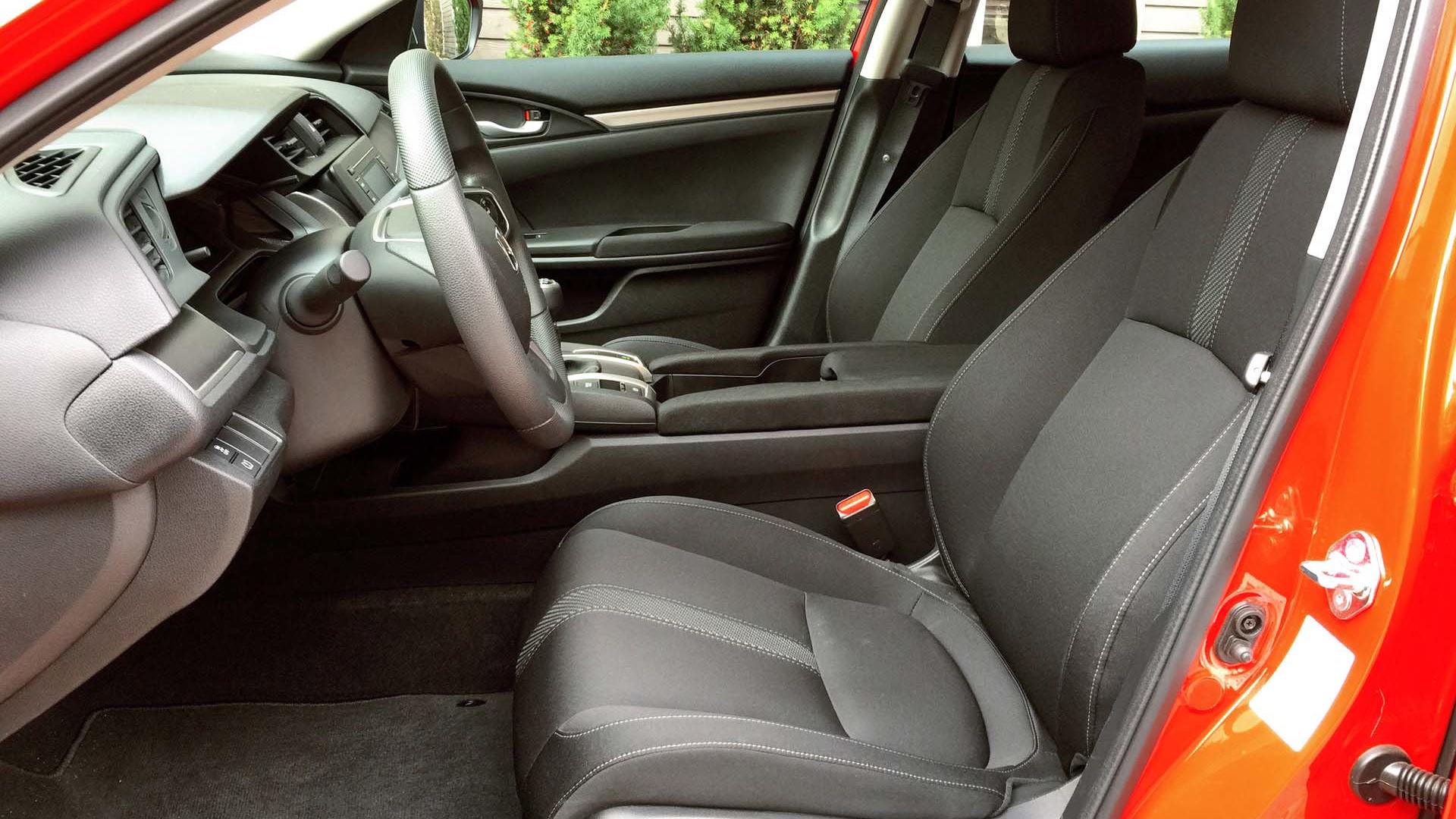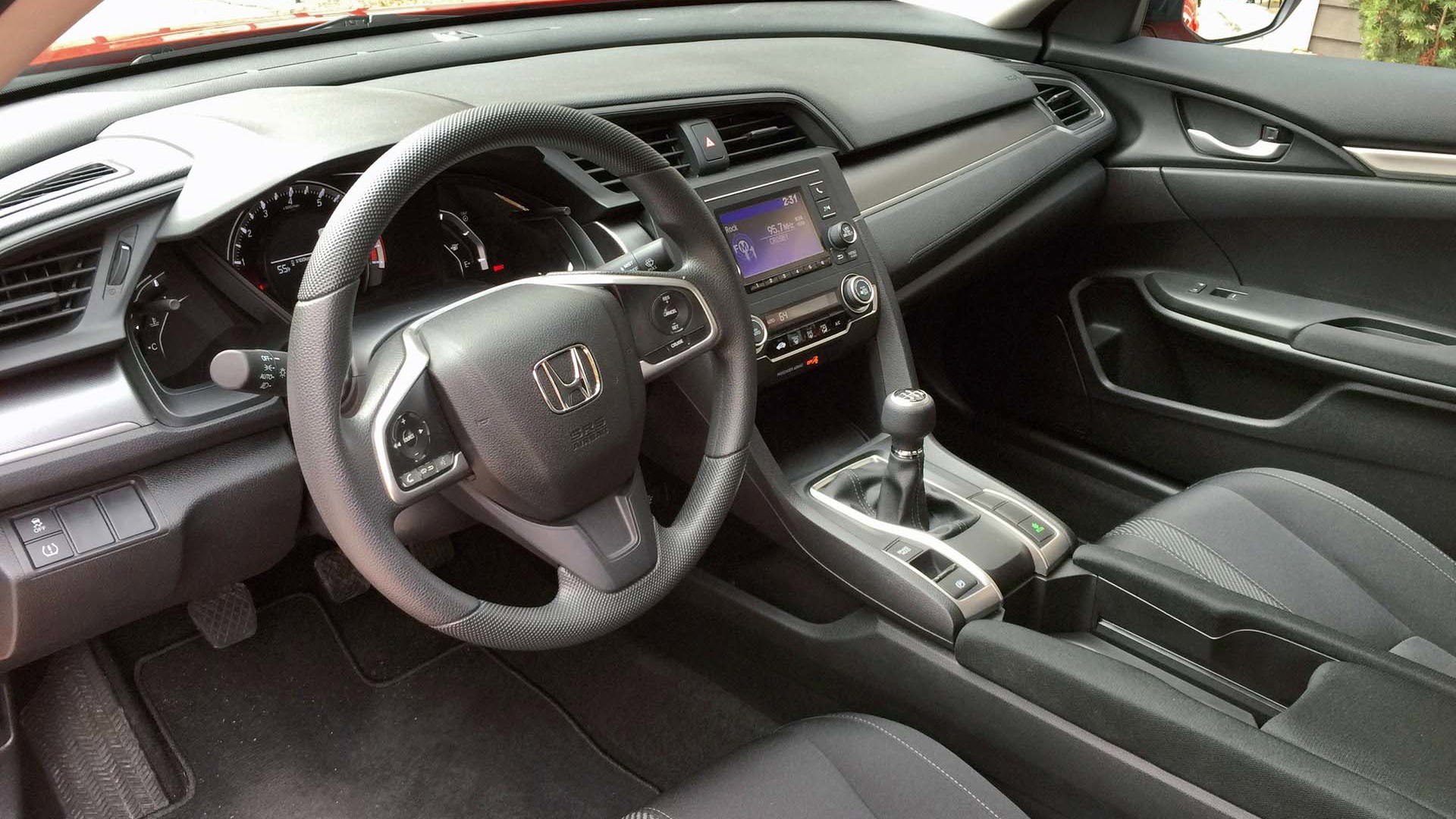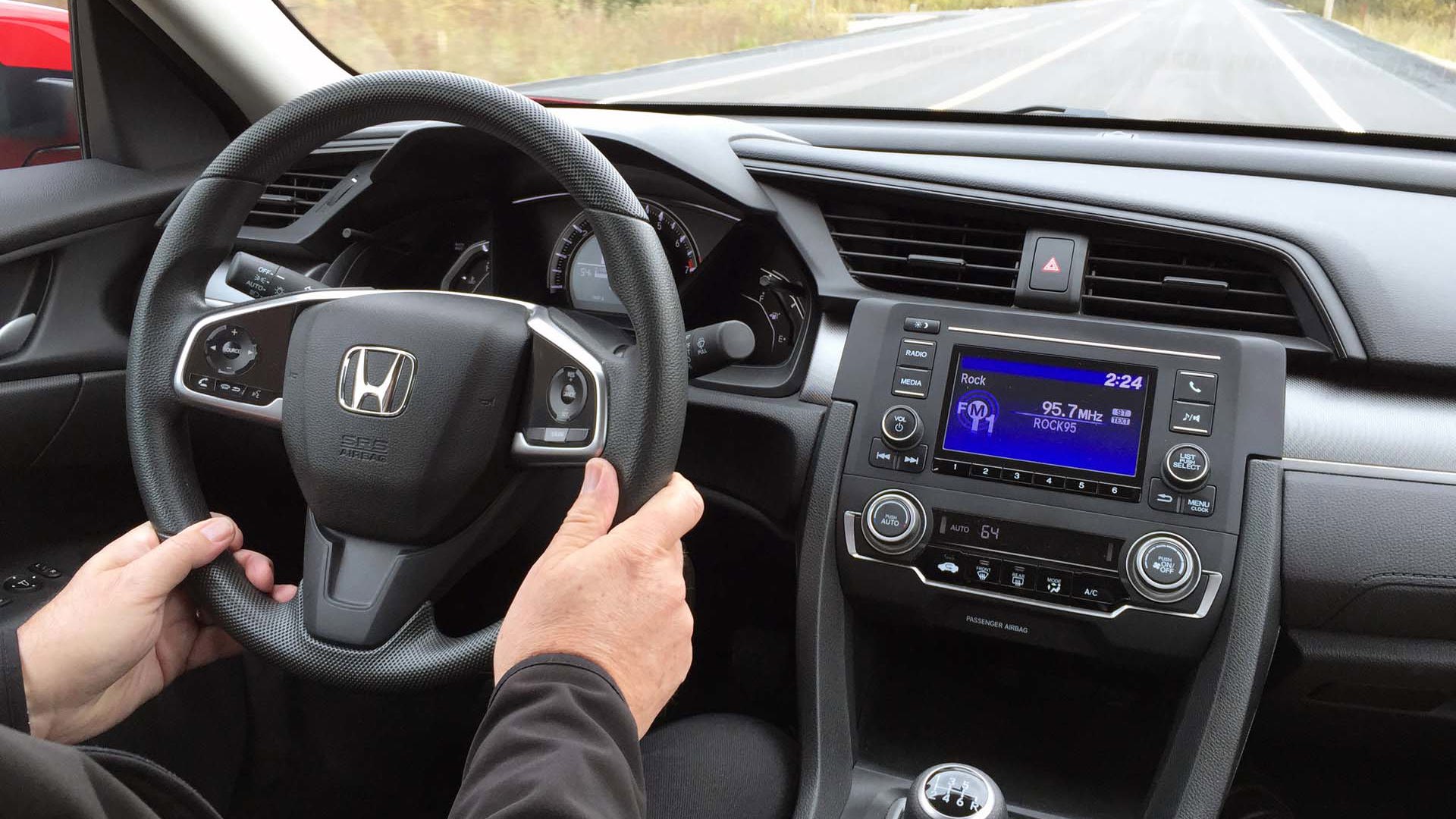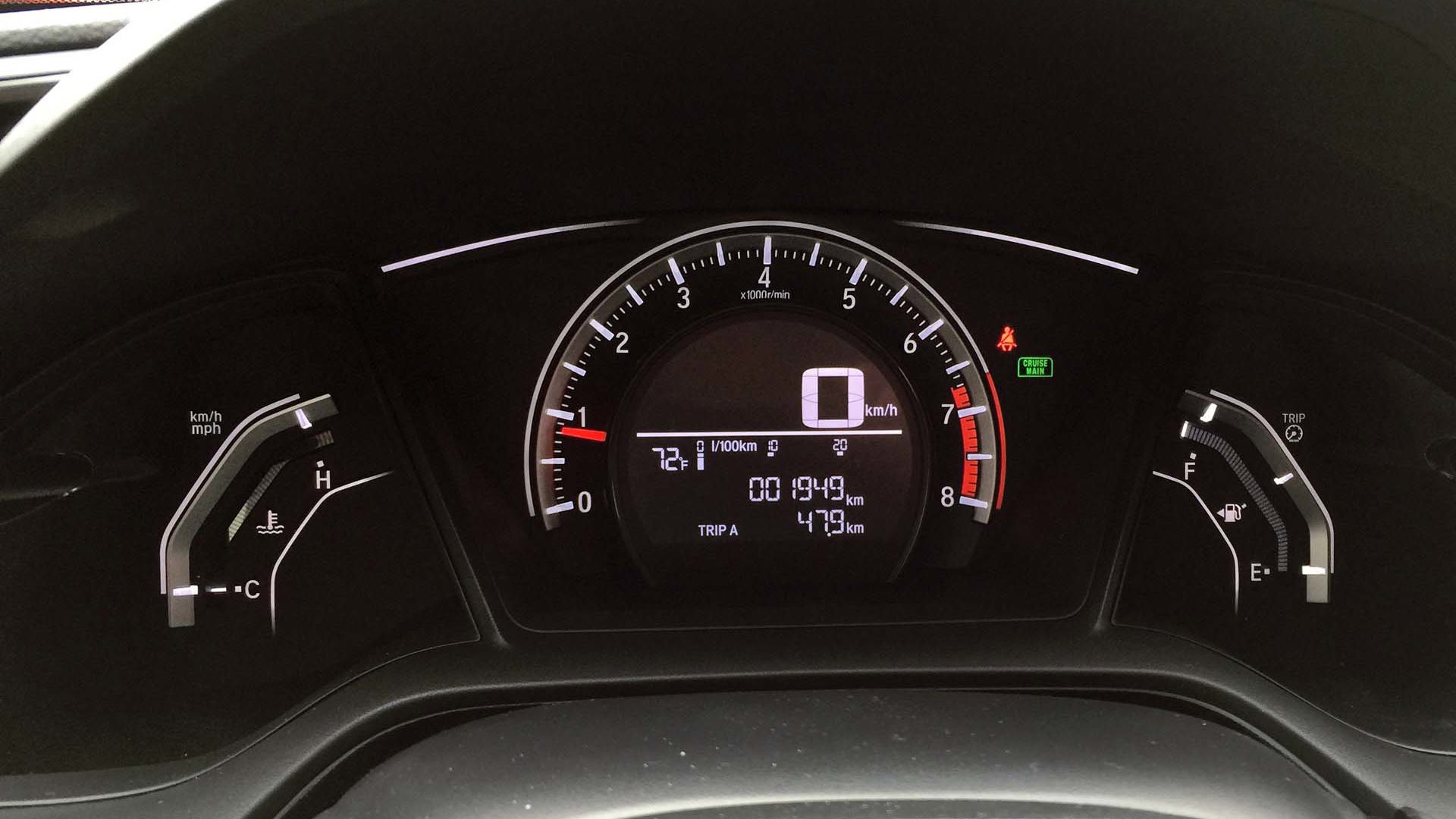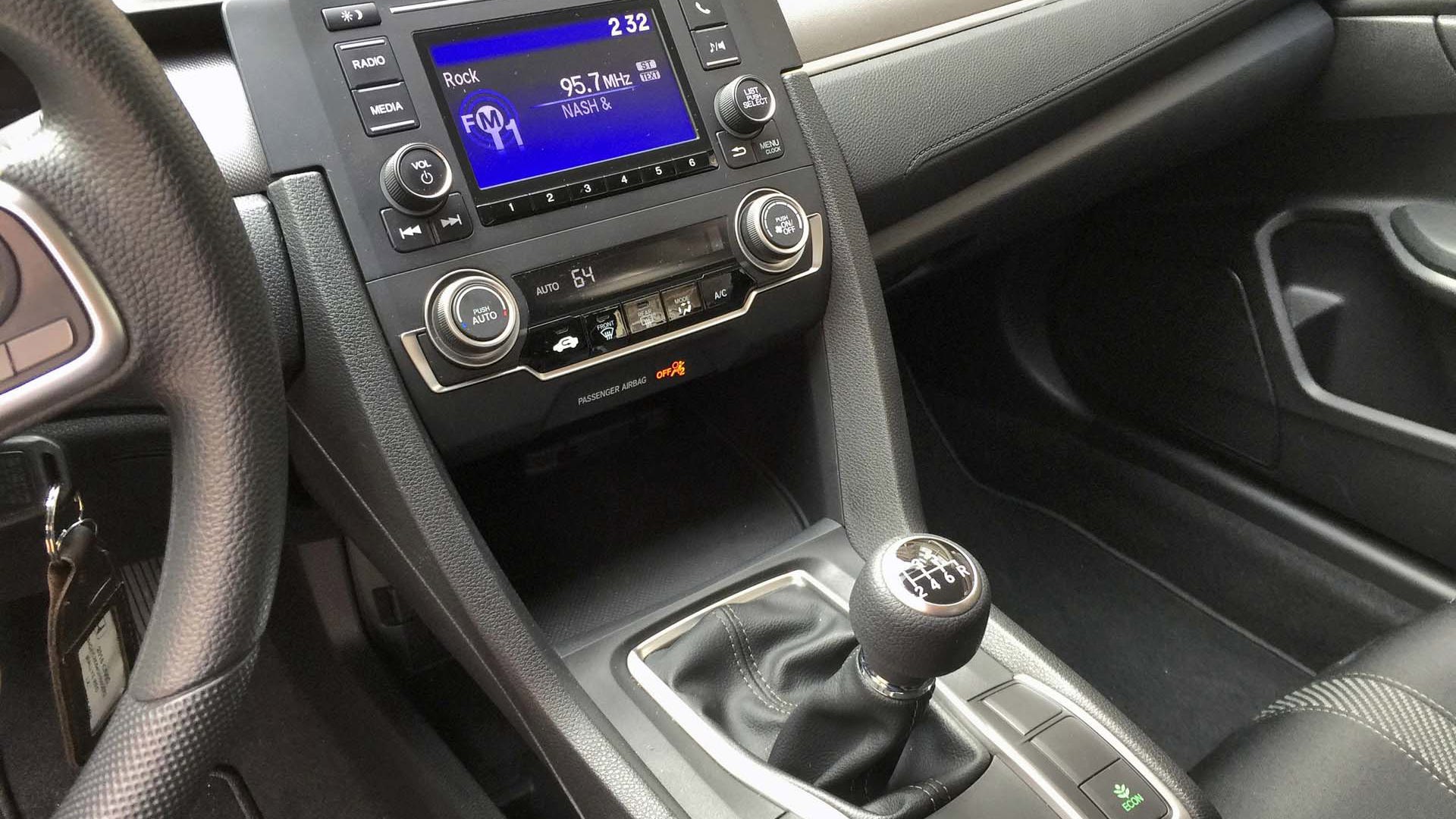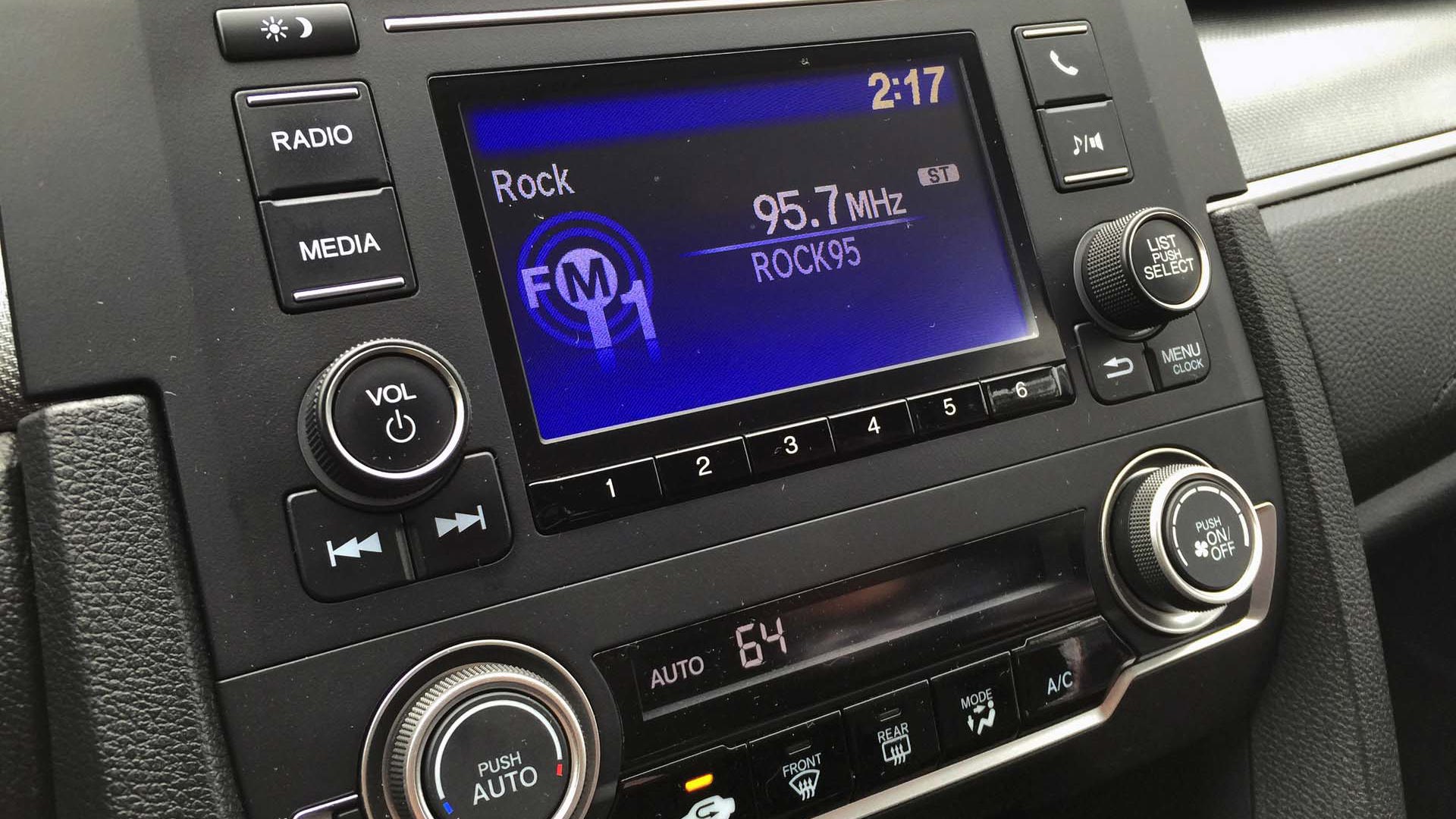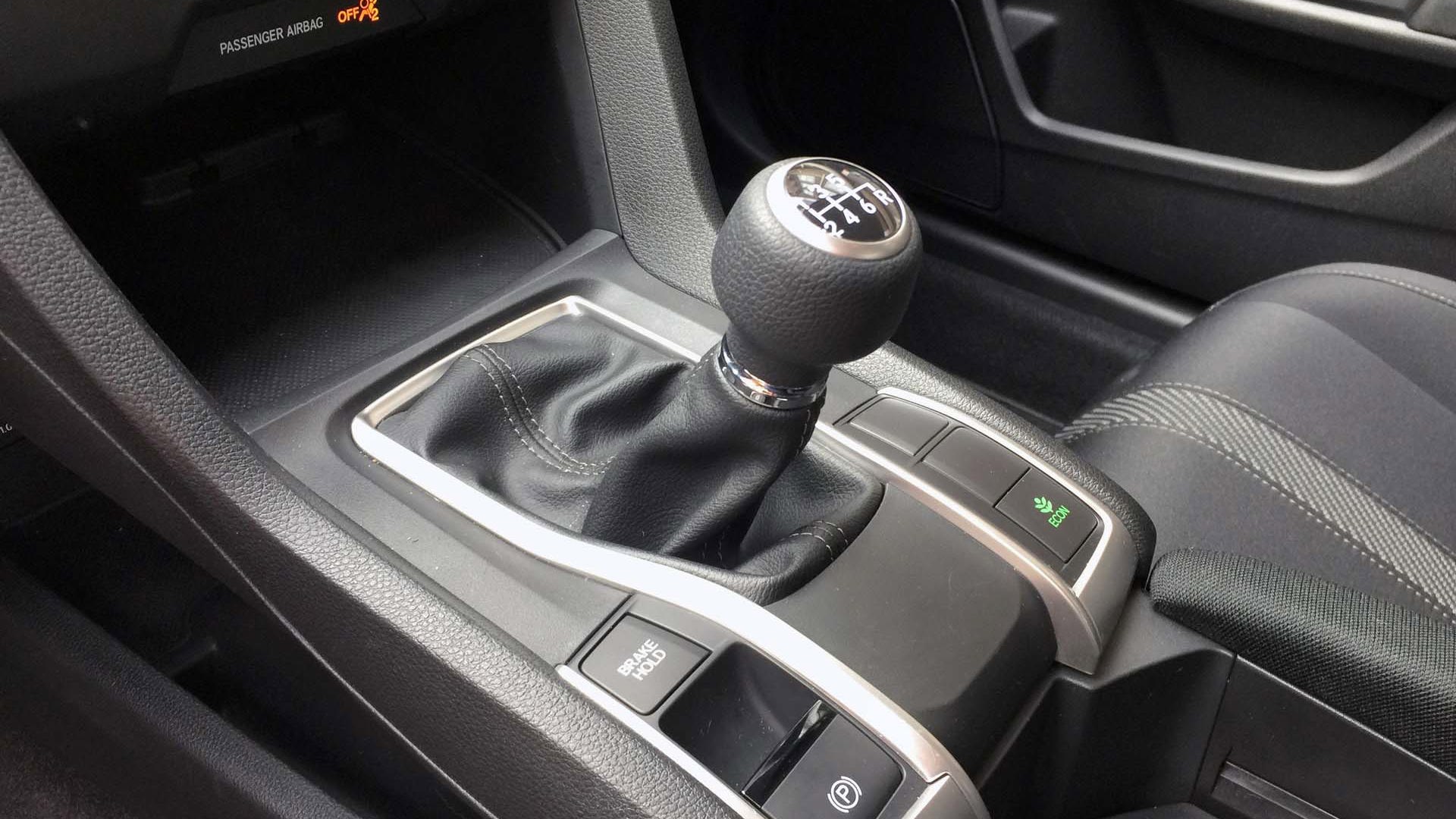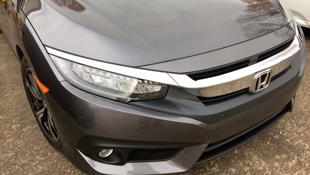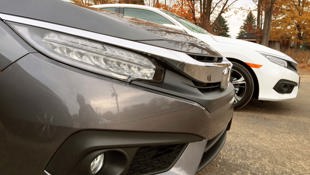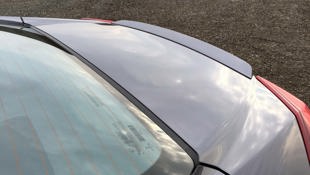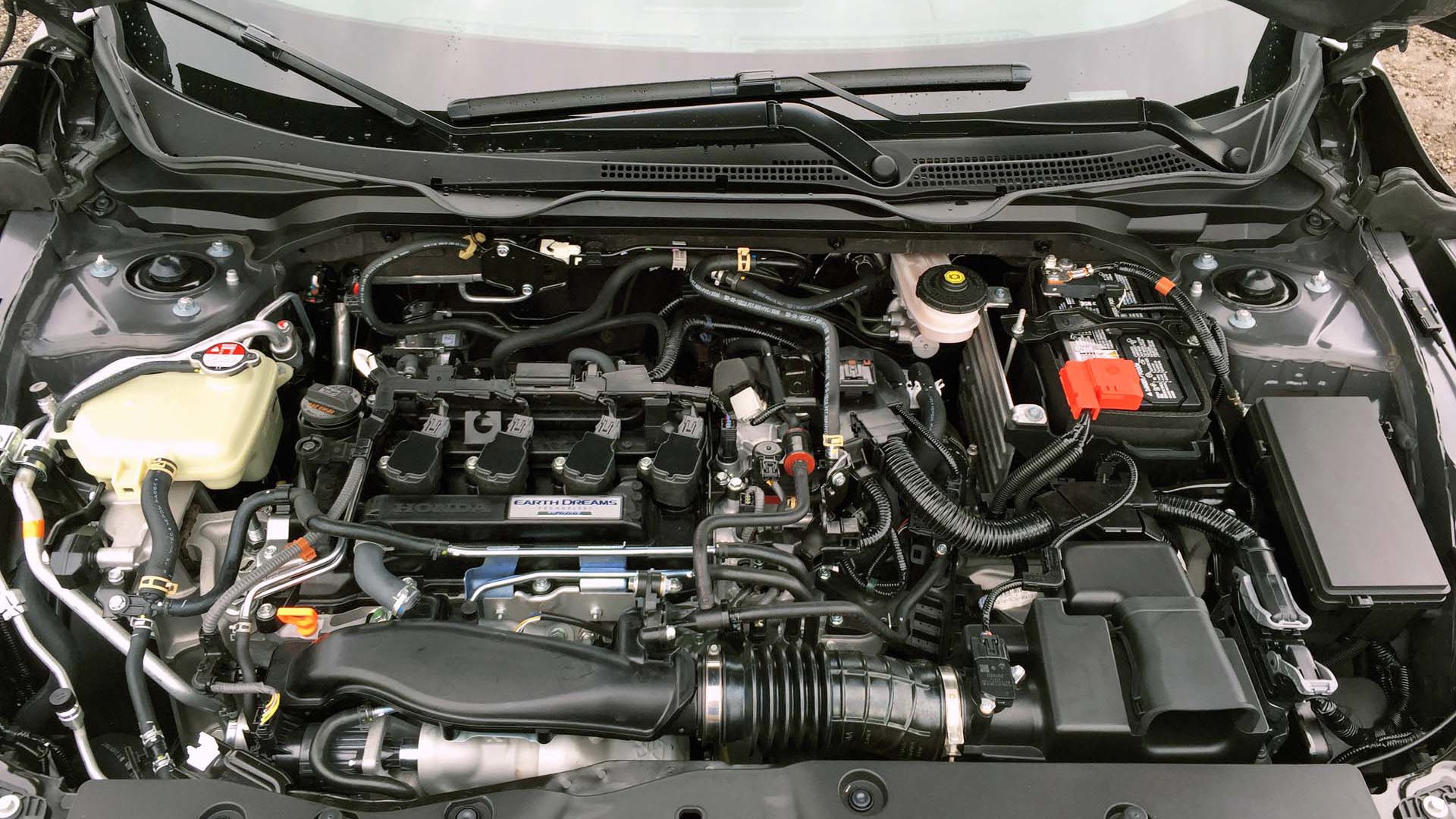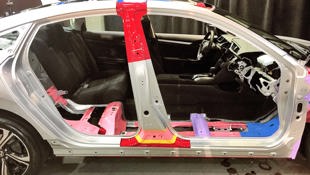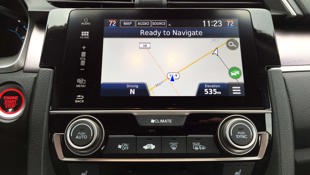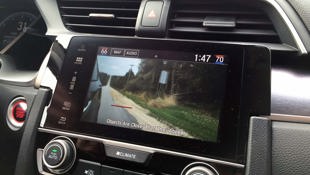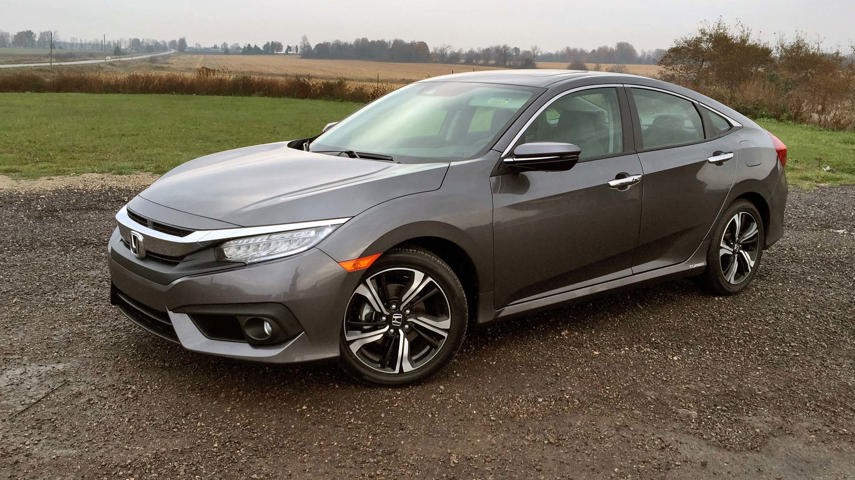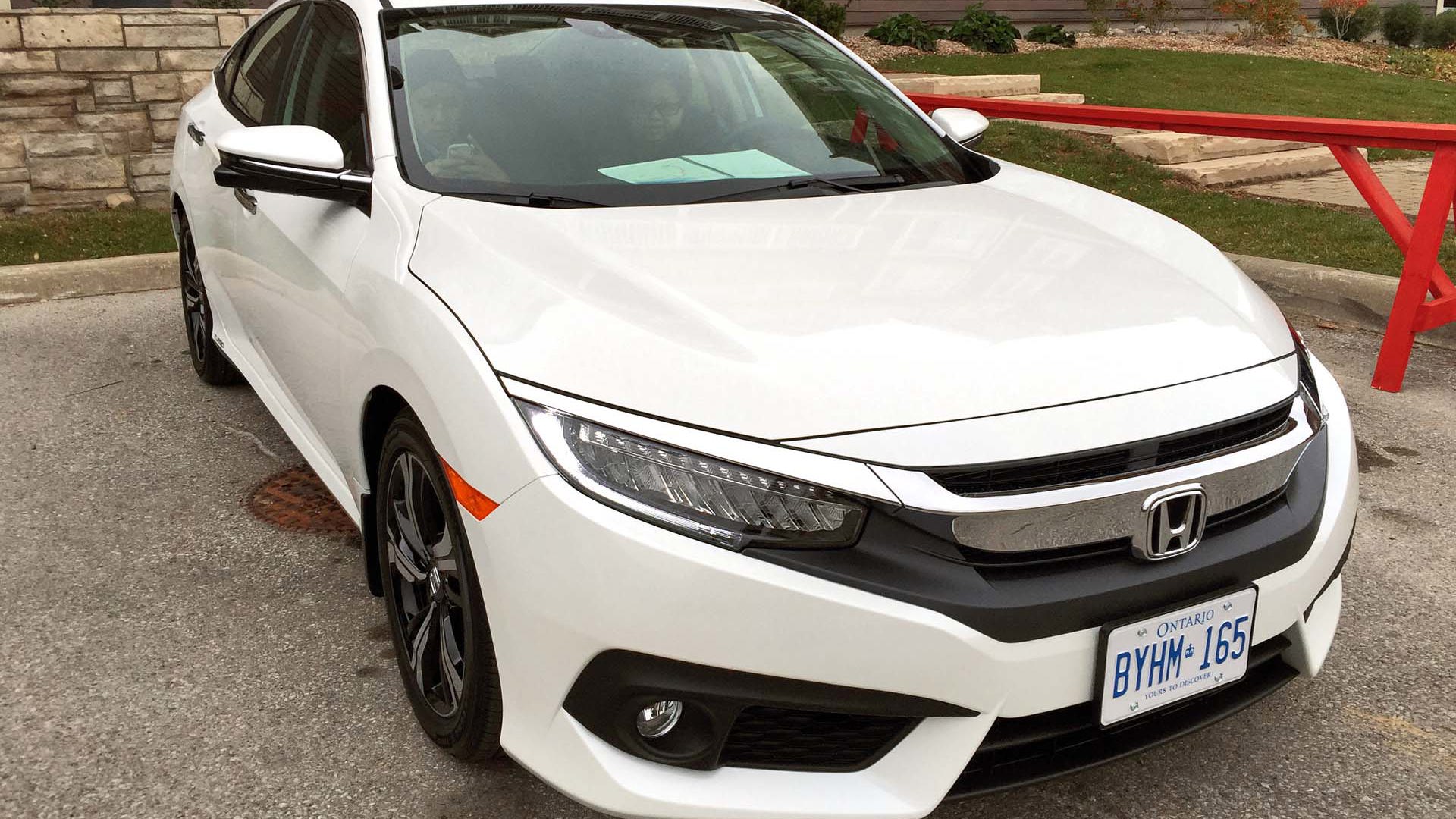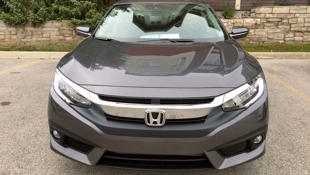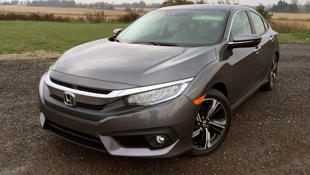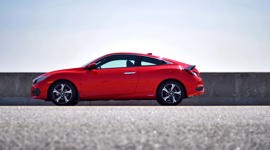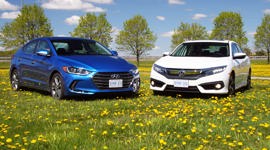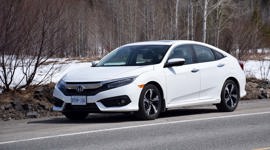Collingwood, Ontario – The all-new 2016 Honda Civic sedan is so different from the current one that its appearance is rather shocking at first. Not only is it considerably bigger – 75 mm longer, 20 mm lower and 126 mm wider with a wheelbase that is 30 mm longer – but it has a much sportier bodystyle with prominent arches over the front wheels, a fastback roof line and high tail reminiscent of the current Civic Coupe. With its wider, lower stance and racier profile, the 2016 Civic sedan could be easily mistaken for an upmarket performance car.
“We wanted a futuristic appearance, athletic, aggressive and more premium looking. Even when it’s standing still, it looks like it’s moving.”
At the 2016 Civic sedan’s introduction to the media in Collingwood, Ontario, North American Chief Engineer for R&D, Gary Evert explained that Honda wanted a more exciting look. “We wanted a futuristic appearance, athletic, aggressive and more premium looking. Even when it’s standing still, it looks like it’s moving,” he enthused.
I asked Evert why the 2016 model needed to be bigger than the last one. “We just needed it to compete with its competition,” said Evert. “This is the size we wanted it to be to do that.”
Virtually nothing has been carried over from the previous Civic: the 2016 Civic has a new platform, new suspension, new body, new interior, and two new engines including, for the first time, an available turbocharged engine.
The Civic’s improved performance begins with a new standard engine: a 158 hp 2.0L DOHC VTEC four-cylinder engine with port-injection (replacing the 143 hp 1.8L SOHC four) that’s offered in the DX, LX and EX trims. More significant is the introduction of an all-new 174 hp turbocharged 1.5L DOHC four with direct-injection, standard in the EX-T and Touring trims. This is the first time Honda has offered a turbocharged engine on the Civic in North America.
2016 Civic DX and LX trims come with a standard six-speed manual transmission (2015s had a five-speed manual) but the EX is no longer offered with a manual. The DX is not available with an automatic transmission, but the LX can be optioned with a CVT (continuously variable transmission) while EX trims with the 2.0L or 1.5T come standard with the CVT, as does the top Touring trim with the 1.5T.
Where it all started: Find of the Week: 1977 Honda Civic Hatchback
Though the Civic’s new engines now offer the most horsepower in their class, they also provide class-leading fuel economy, according to Honda. The 2.0L engine offers (l/100 km) ratings of 7.8 city/5.8 hwy/6.9 combined while the turbocharged 1.5T provides 7.6 city/5.5 hwy/6.7 combined. That compares to the 2015 Civic with 7.9/6.1/7.1. Interestingly, even the Civic’s new turbo engine offers slightly better fuel economy than some of its competitor’s naturally aspirated engines. The 2016 Toyota Corolla LE Eco, for example, has a combined rating of 6.8 L/100 km. Call me a cynic, but I’m skeptical that the Civic’s turbo engine can really offer that kind of fuel economy in the real world. It’s a subject that bears investigating in future test drives.
Honda provided us with a top-of-the-line Civic Touring 1.5T model for the day, but they only had one Civic LX 2.0 with the manual transmission available. We scurried back early from the day’s drive to get our hands on it, and it was worth it. (Note: this was a U.S. car in a red colour that is not available in Canada).
The new 1.5L turbo engine develops maximum torque very early, providing excellent low-speed throttle response, even with the standard CVT. With 162 lb-ft starting from just 1,800 rpm all the way up to 5,500 rpm, acceleration is brisk and torque-steer is almost non-existent. There is some ‘turbo lag’ from zero to about 2,000 rpm, but when the boost comes on, the car accelerates dramatically but smoothly. Honda wouldn’t tell us what the official 0 to 100 km/h time is, but they did say the Civic 1.5T is one second faster than the 2.0L model.
The standard CVT offers “torque converter characteristics” says Honda, which is a good way to describe the way it quickly transfers engine power to the front wheels without a lot of engine moaning and CVT droning. Still, the turbo engine sounds rather coarse and noisy under hard acceleration, particularly accelerating up a hill. Conversely, the engine is surprisingly quiet on flat or downhill sections, or when just driving in city traffic or cruising on the freeway. I saw just 1,800 rpm on the tachometer at 100 km/h. There is also a Sport on mode on the shift console which increases engine revs at any given speed to provide quicker throttle response, such as when passing or changing lanes. An Econ button on the console also provides reduced throttle response to improve fuel economy, but I found that it wasn’t an impediment to performance when quick acceleration was needed. The CVT doesn’t offer a manual shifting mode, and a traditional manual transmission is not available with the turbocharged engine – at least not yet.
Improved handling was a big priority for Honda engineers even though the 2015 model is no slouch. Chief Engineer Gary Evert insisted the new Civic hasn’t lost any of its nimbleness even though it’s bigger. “It’s become more agile, it’s lighter, we improved the suspension and the steering,” he said.
The 2016 Civic sedan features an all-new independent multi-link setup in the rear and revised struts in the front. A new rear subframe is designed to increase rigidity and improve vehicle dynamics. As well, new hydraulic bushings in the front suspension (2.0L) and in both front and rear suspensions (1.5T) are designed to reduce harsh impacts from rough road surfaces. Lower trims (DX, LX) are tuned for more ride comfort while higher trims (EX, EX-T, Touring) are tuned for more agility and sporty handling.
Combined with a 25 percent increase in torsional rigidity, a wider track and lower centre of gravity, all these improvements add up to a new kind of Civic driving experience particularly in the EX-T and Touring trims with 17-inch radials and sport-tuned suspension. On the secondary roads around Collingwood, our Civic Touring sedan hugged the road with a level of stability and control that reminded me of more expensive European sport sedans. Just as impressive is the Civic’s ride: over bumpy surfaces, the suspension absorbs bumps confidently without upsetting the car’s balance or making any unpleasant noises.
New for 2016 is variable ratio electric steering that provides quicker steering response as the car goes faster along with greater high-speed stability and on-centre feel. Whereas the 2015 Civic had 3.1 turns lock-to-lock, the new one has 2.2. At low speeds, the variable ratio steering makes steering effort and parking tasks easier. At freeway speeds, the Civic tracks true with minimal engine and wind noise making long drives a real pleasure.
We also drove the Civic LX with the standard normally-aspirated 2.0L four-cylinder engine and standard six-speed manual transmission. Despite the high-tech prowess of the new turbocharged engine, I preferred this non-boosted 2.0L engine. It has less horsepower and torque than the turbo engine, but it still offers more horsepower than other cars in its class. And it’s worth noting that the LX weighs more than 80 kg less than the Touring model. I enjoyed the normally-aspirated engine’s steady, predictable power curve when accelerating and its delicious exhaust note. Yes, this engine sounds better than the turbo.
Adding to the driving pleasure was a notchy six-speed manual transmission that is easy to shift and a clutch that is easy to engage. Shifts aren’t super short, but they’re not long either. Though I didn’t get to test the 2.0L paired with a CVT, my guess is that the 2.0L’s horsepower and torque numbers combined with this CVT’s above-average performance would make this an ideal combination for the typical buyer looking for good fuel economy and acceptable performance.
Despite a lower seating position for 2016, the driver’s visibility over the hood and to the sides is very good, thanks in part to a lower cowl and thinner A-pillars, while over-the-shoulder visibility to the right rear is assisted by a small third side window. In reverse gear, a rearview camera displays a view of the area behind the car in the centre screen; and exclusive to Honda, when signalling a right turn, an image of the area on the right side of the car appears in the centre screen to reveal cars in the blind spot.
A Brake Hold’ button next to the shift lever stops the car from rolling back on a hill. It’s standard with both manual and automatic transmissions.
The 2016 Civic’s longer wheelbase and wider body mean more cabin space. In front, the extra body width and lower cowl make the cabin feel more spacious while at the rear the extra body width and 30 mm of additional wheelbase adds more legroom and hiproom. The sloping fastback roofline allows sufficient headroom at the rear but it’s not generous. I’m 167 cm tall and I had about 30 mm of headroom.
The instrument panel is attractive and well-designed but uses mostly hard plastic surfaces. We found the front and rear seats to be very comfortable but the standard cloth material in the LX 2.0L that we drove had a rather cheap appearance. Conversely, the perforated leather seats in the Touring were quite attractive.
A big change for 2016 is the elimination of the previous Civic’s two-tier instrument panel that featured a digital speedometer and information screen on top of the dash and a tachometer behind the steering wheel. I was never a fan of this design, so I was happy to see a return to a single display behind the steering wheel. In the 2016 Civic, a 7.0-inch backlit TFT (thin film transistor) display behind the steering wheel provides both a digital speedo and tachometer together flanked by separate fuel and coolant gauges. The central TFT display can also show vehicle information such as a turbo-boost gauge, average fuel economy, and navigation information all of which can be accessed by pressing the Info button on the left steering wheel spoke.
A major improvement for 2016 is a large centre console with a padded, sliding armrest and a large storage bin with removable cupholders and sliding coin tray. The large console was made possible by replacing the hand brake handle with an electronic pushbutton brake beside the shift lever. With the cupholders in place, an iPad Mini will fit in the bin; with the cupholders removed, a standard iPad will fit in there. There’s also an open bin at the bottom of the centre console that features a wireless phone charger – however, you need a compatible phone or phone accessory to make it work. Below this storage area is another storage area with USB and 12-volt chargers. A hole in between them allows the driver to place a phone on the top shelf and feed a charging cable or USB cable through to the bottom shelf.
While the DX trim has a 5.0-inch centre screen with dials and pushbuttons to operate the audio and telephone functions, higher trims have a 7.0-inch touchscreen with no hard buttons. This means that volume is adjusted by touching or sliding a finger on a vertical scale rather than turning a dial, something we’ve found awkward in previous reviews. However, the new Civic has a volume switch on the left steering wheel spoke that offers a similar sliding motion to adjust volume. Still, I couldn’t reach this button with my left thumb while holding the steering wheel which means I had to remove my left hand while adjusting the volume and steer with my right hand.
The Civic’s audio system is compatible with Apple CarPlay and Android Auto and is capable of text messaging and e-mail. DX trims have a 160-watt system with four speakers, LX, EX and EX-T have 180-watt 8-speaker system, and Touring offers 450-watt 10-speaker audio system. By the way, the CD player is gone, another victim of the ongoing music technology revolution.
Voice control can be used to operate the audio, climate and navigation systems, but the system only accepts a particular set of commands, which can be displayed in the screen when prompted. After you learn these commands, you can operate the heater, radio and navi system without taking your hands off the steering wheel.
Remote starting is available on top models and it includes automatic climate control activation before getting in the car. Another cool feature is walk-away auto lock that automatically locks the doors when you’re about two metres away from the car.
The Civic’s fully-lined trunk is very spacious (428 litres) and the trunk opening is wide enough for big suitcases. Pull-type handles in the trunk release the split folding seatbacks for increased storage space (DX has a single folding seatback).
The new Civic uses a new combination of high strength and ultra-high strength steels in the body structure to improve crash safety. Evert predicts that the Civic will meet the NHTSA’s 5-star crash safety rating and the IIHS’ Top Safety Pick + rating.
2016 Honda Civic prices have gone up slightly, but every trim level includes additional standard equipment worth an average of $1,800, according to Honda.
The base Civic DX MT ($15,990) has gone up in price by $240 but offers an additional $2,300 in features, such as keyless entry, Bluetooth, 5-inch monitor, rearview camera, power door locks, LED daytime running lights, LED tail lights, 16-inch tires and steel wheels, and rear disc brakes.
The 2016 Civic LX MT ($18,890) and LX CVT ($20,190) have gone up by $340 but now include $1,800 more in features: automatic climate control, 7-inch centre touchscreen, brighter TFT gauges, four more speakers, text messaging and Apple Carplay/Android auto, and automatic headlights.
The 2016 Civic EX 2.0L ($22,590) is up by $340 but adds $800 in features such as dual-zone automatic climate control, 7-inch TFT gauges, leather shift knob, Carplay/Android auto, and illuminated vanity mirrors.
The Civic EX-T ($24,990) also adds the turbocharged engine.
The top-of-the-line Touring ($26,990) is up by $1,440 but adds $4,300 of features including the more powerful turbocharged engine, automatic emergency braking, LED headlights, LED tail lights, trunk lip spoiler, 4-way power front passenger seat, heated rear seats, dual zone automatic climate control, 7-inch TFT display, Carplay/Android auto, wireless phone charging (for compatible phones) and four speakers.
In addition, all 2016 Civics in LX and above trims are available with Honda’s package of active safety features called “Honda Sensing”. This includes Lane Departure Warning, Lane Keeping Assist, Forward Collision Warning, Adaptive Cruise Control with Low Speed Follow, and Crash Mitigation Brake System. It’s priced at just $1,000, a good deal for all those features.
In Canada, the 2016 Honda Civic Sedan is available in seven colours: black, white, blue metallic, silver metallic, burgundy, steel metallic, and white pearl, but not red, green or any colourful shades. Interiors come in Black or Ivory with grey or black stripes on the front seats.
On sale in November, 2016 Honda Civic sedans are built in Alliston, Ontario and Greensburg, Indiana. However, all Civic sedans and coupes sold in Canada will come from Alliston. The upcoming Civic Si coupe will also be sourced from Alliston, but the future Civic hatchback and Type R will be built in Swindon, England.
Dave Gardener, Senior VP of Operations at Honda Canada described the 2016 Civic as “the most ambitious redesign of the Civic in Honda’s history.” Given its status as the best-selling car in Canada for the past 17 years, he might have also called it the most ambitious gamble in Honda Canada’s history. With a heightened emphasis on performance and styling, the 2016 Civic sedan has come a long way from it roots as an economy car. The question is whether longtime Civic sedan owners warm up to this sportier image. Honda is betting the farm on it, so they must believe they will.
Pricing: 2016 Honda Civic Sedan
DX $15,990
LX MT $18,890
LX CVT $20,190
LX CVT HS $21,190
LX 2.0 CVT $22,590
EX 2.0 CVT HS$23,590
LX-T CVT HS $24,990
Touring CVT HS $26,990
